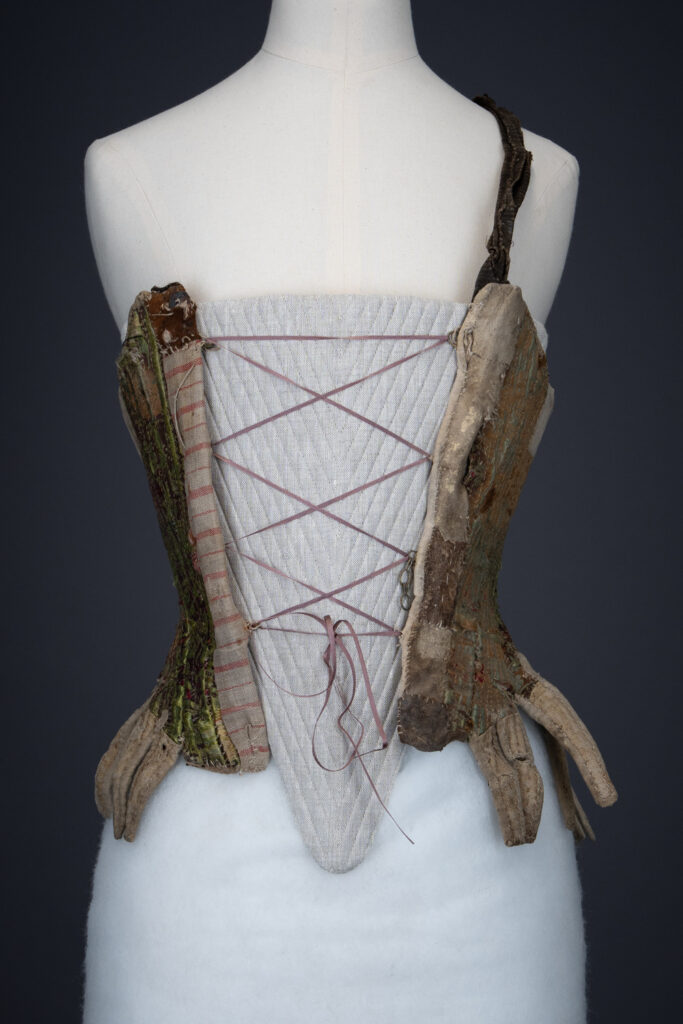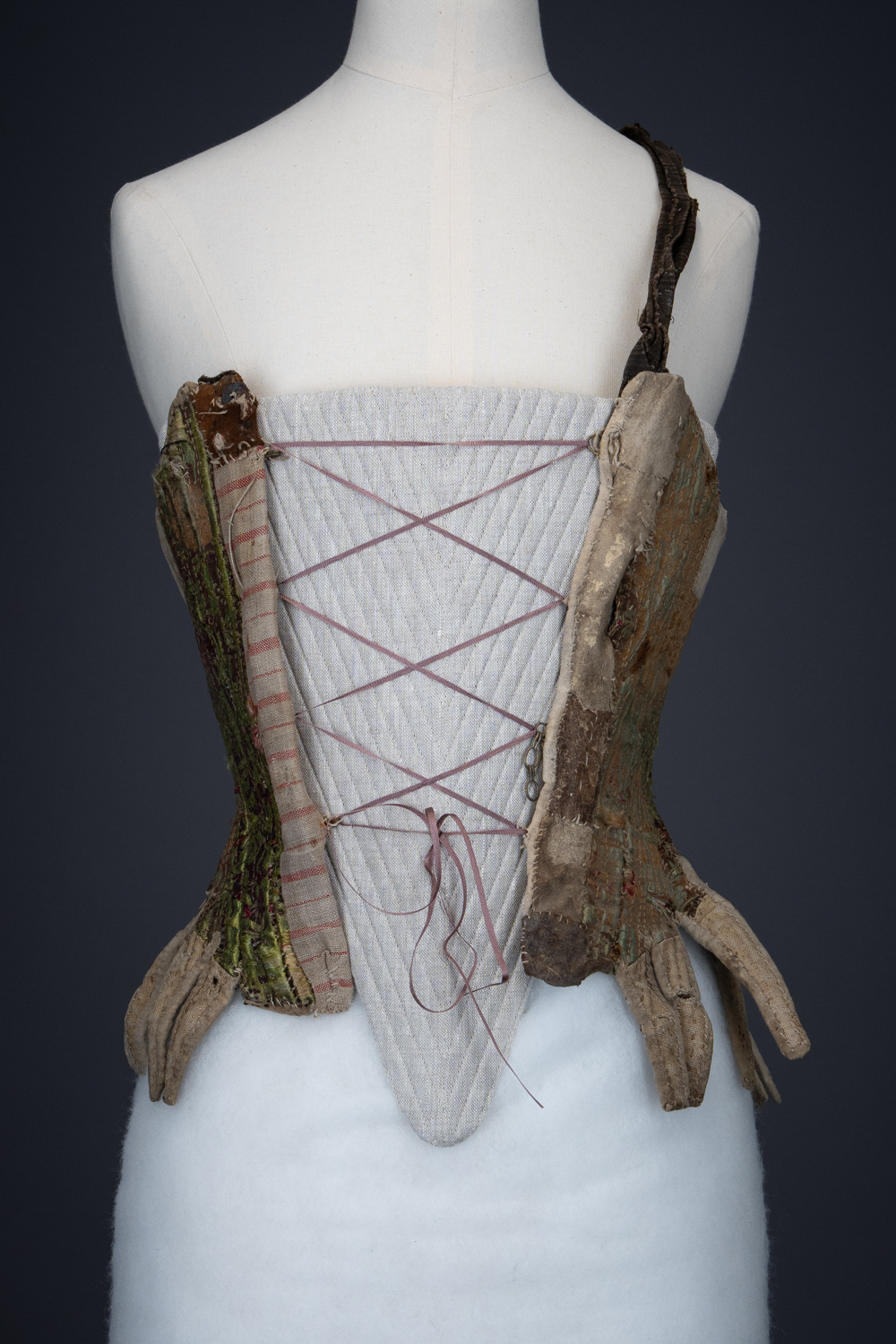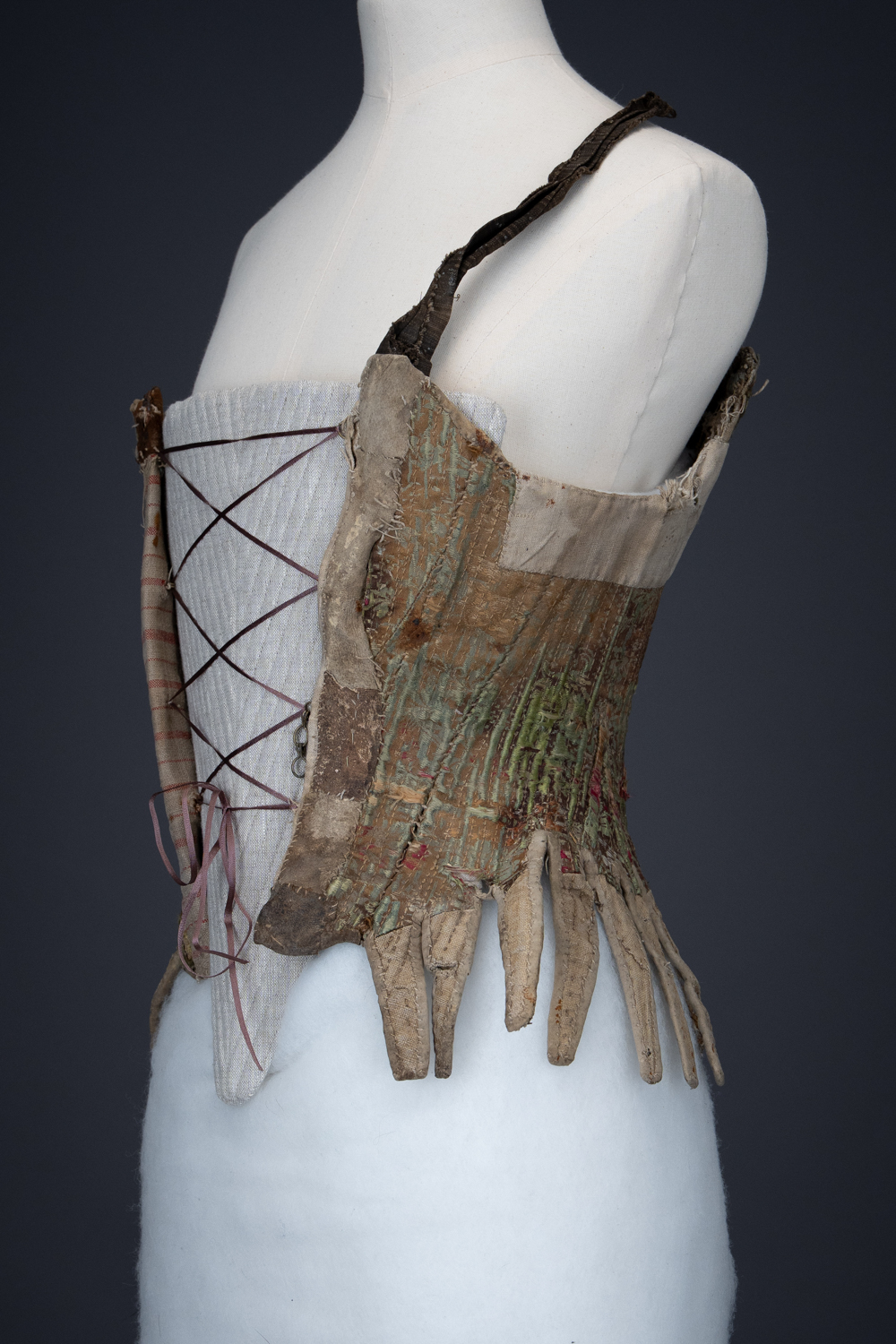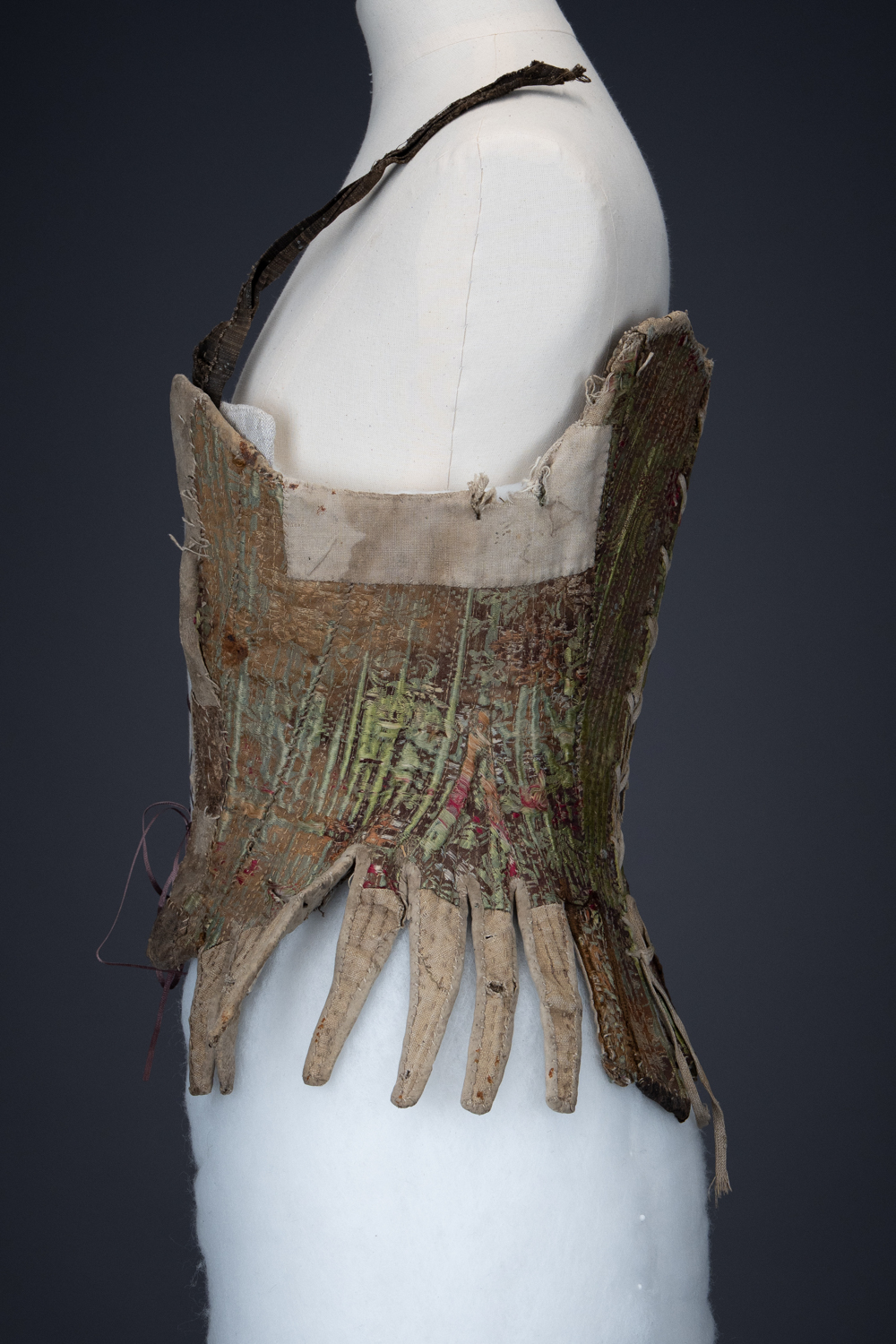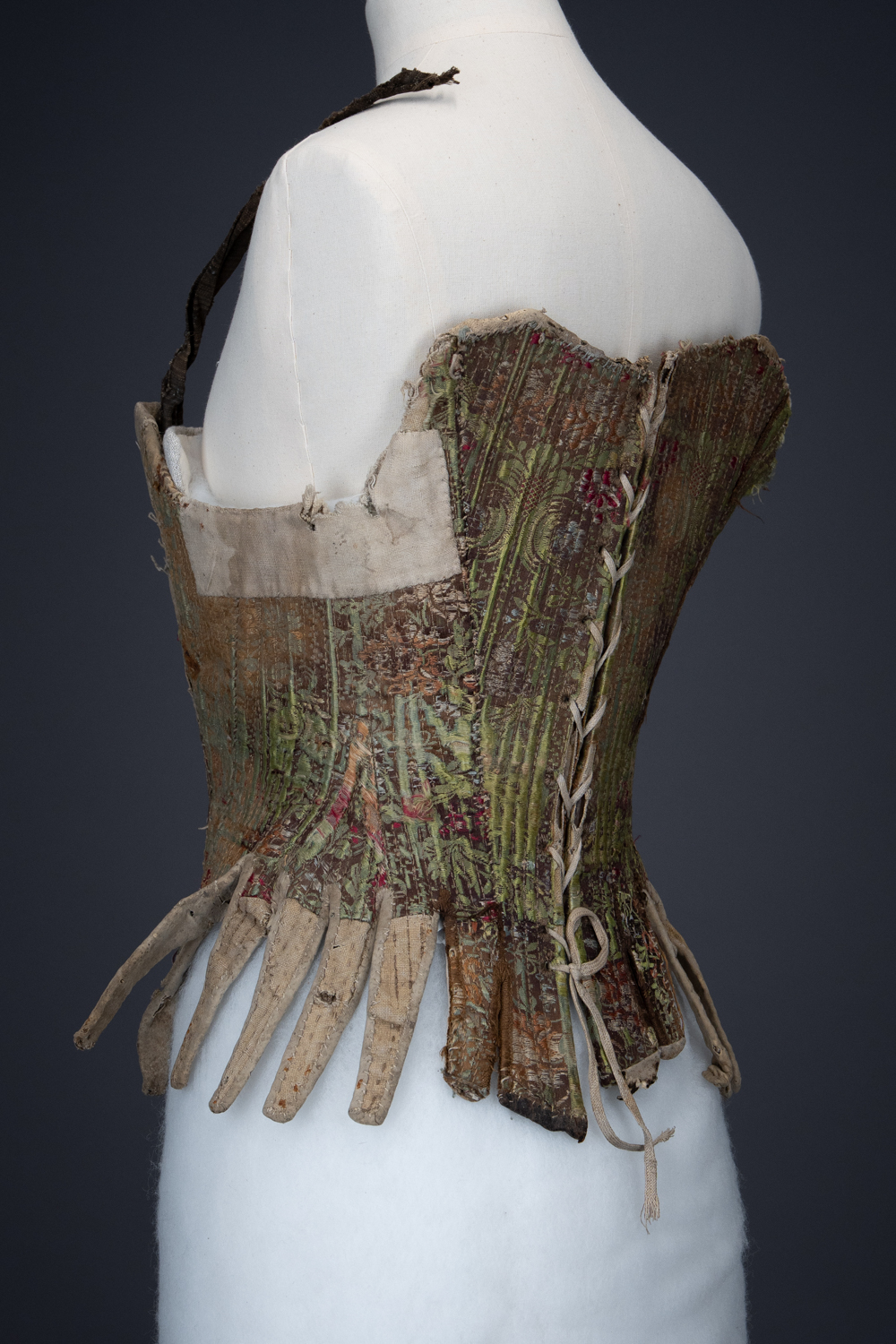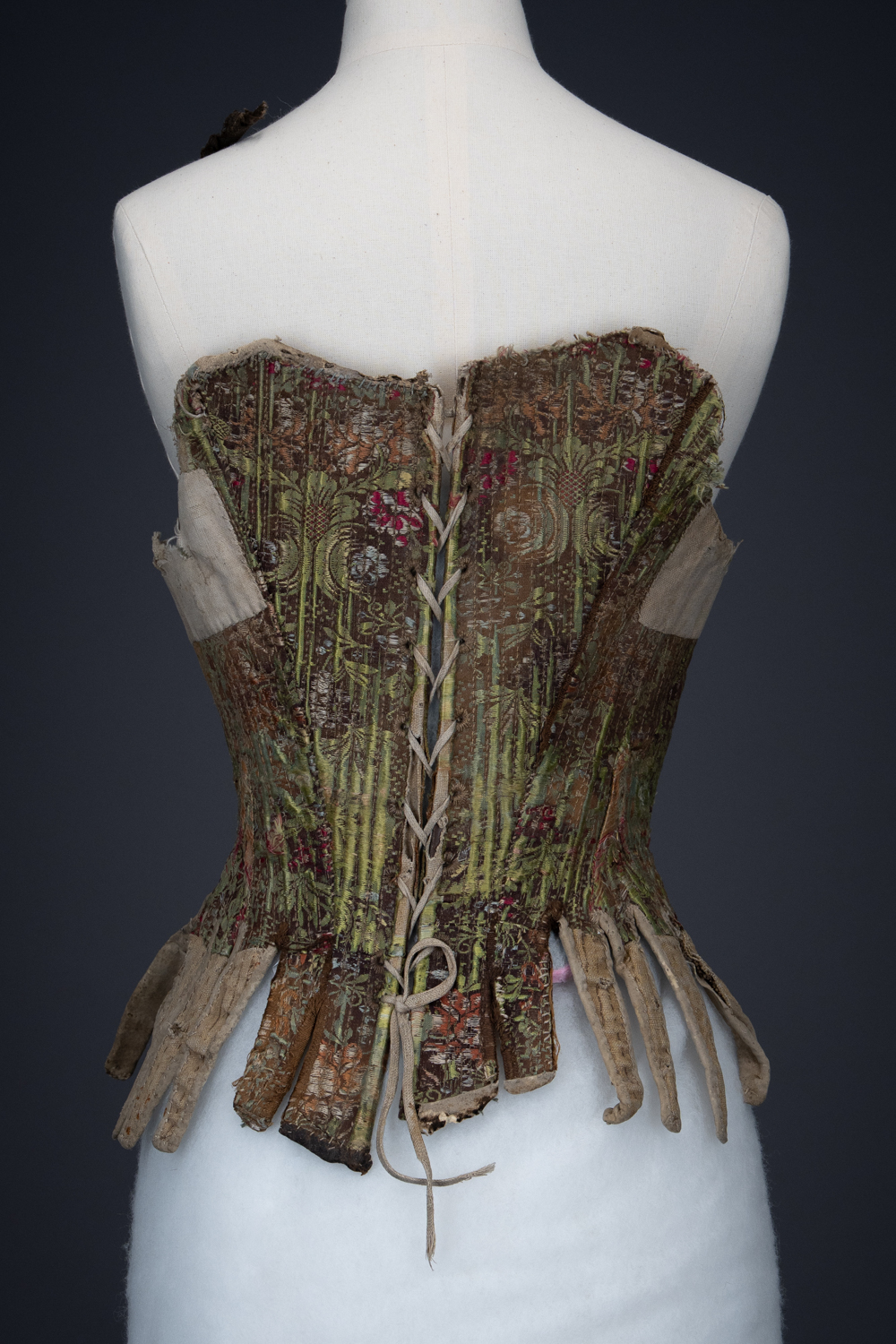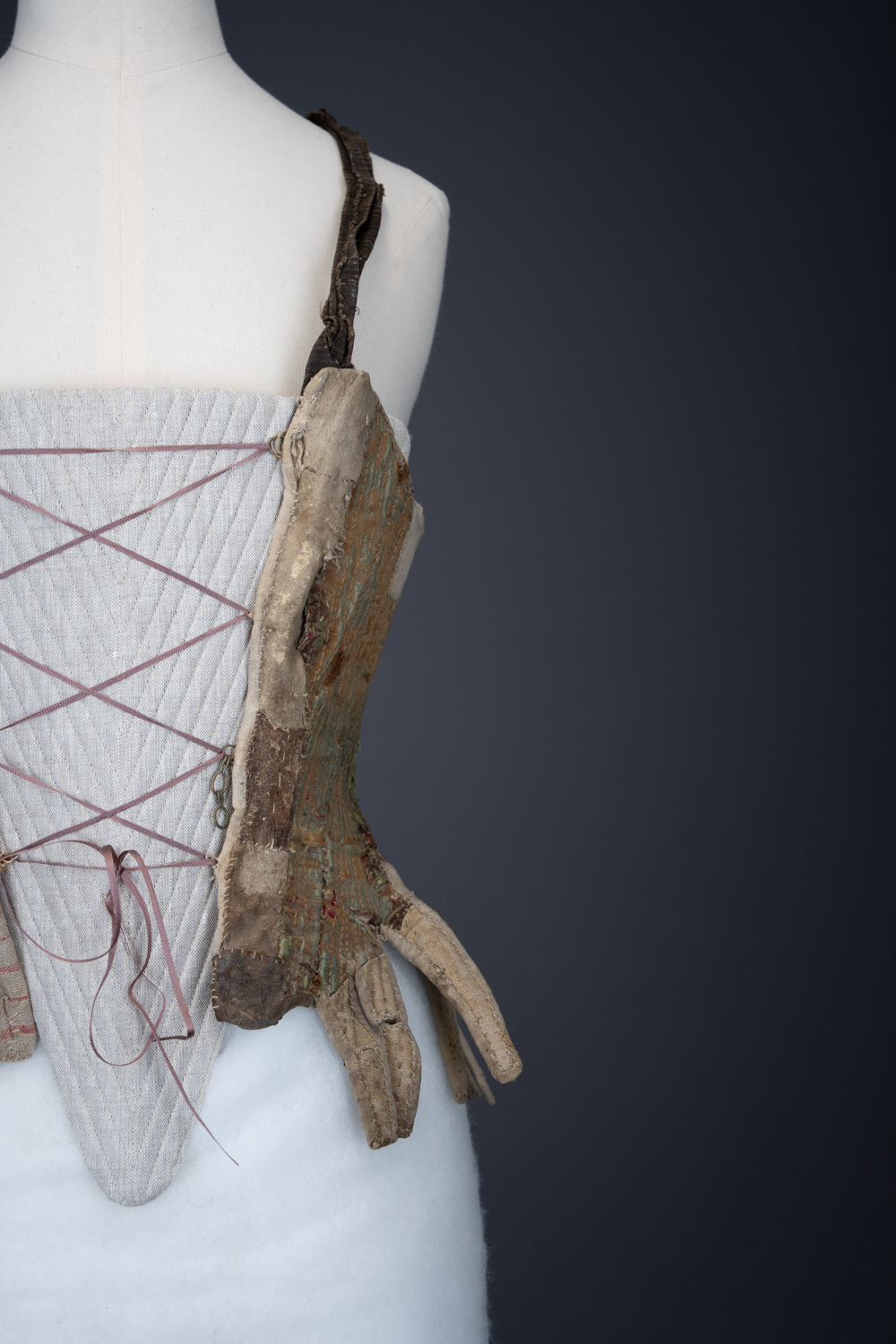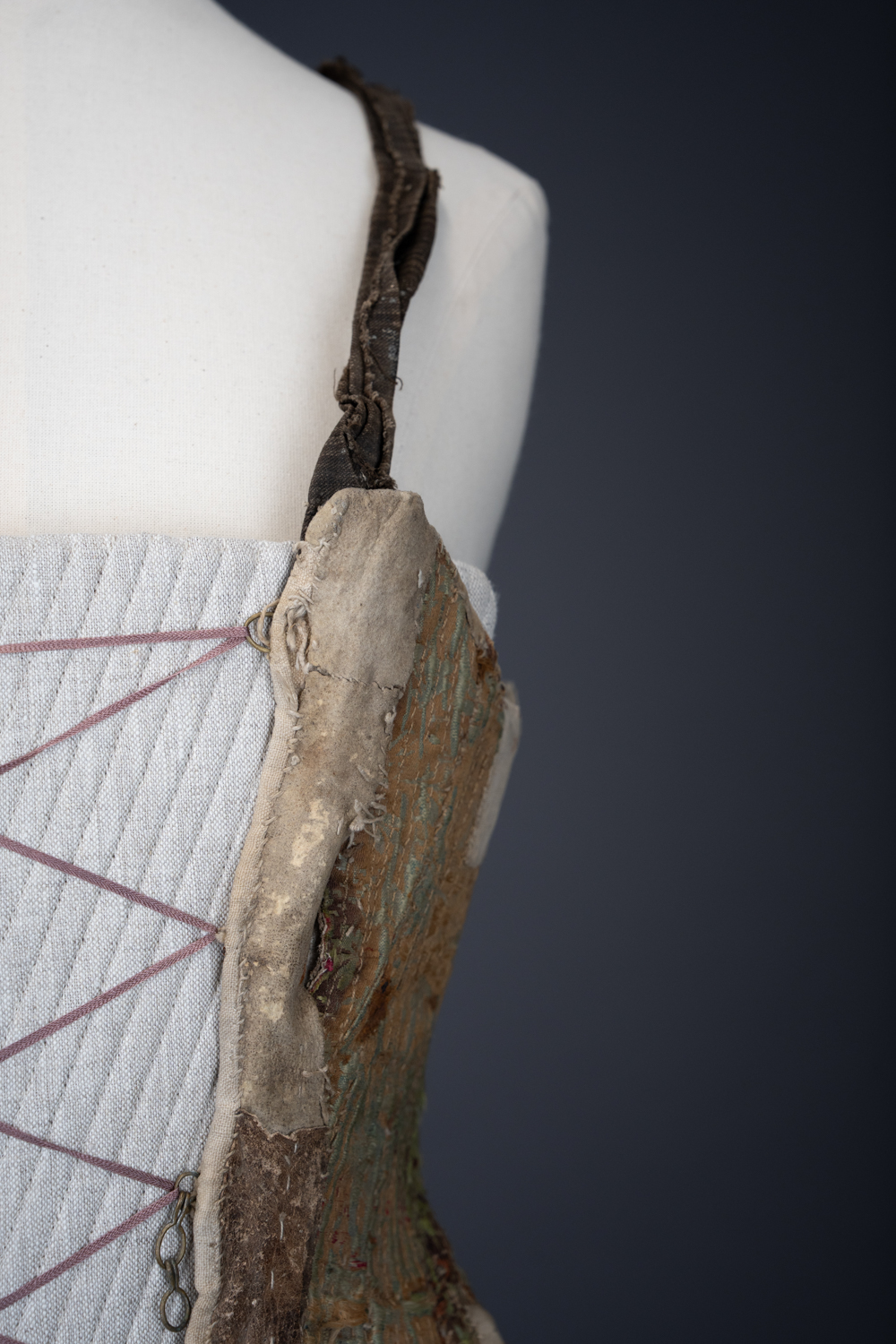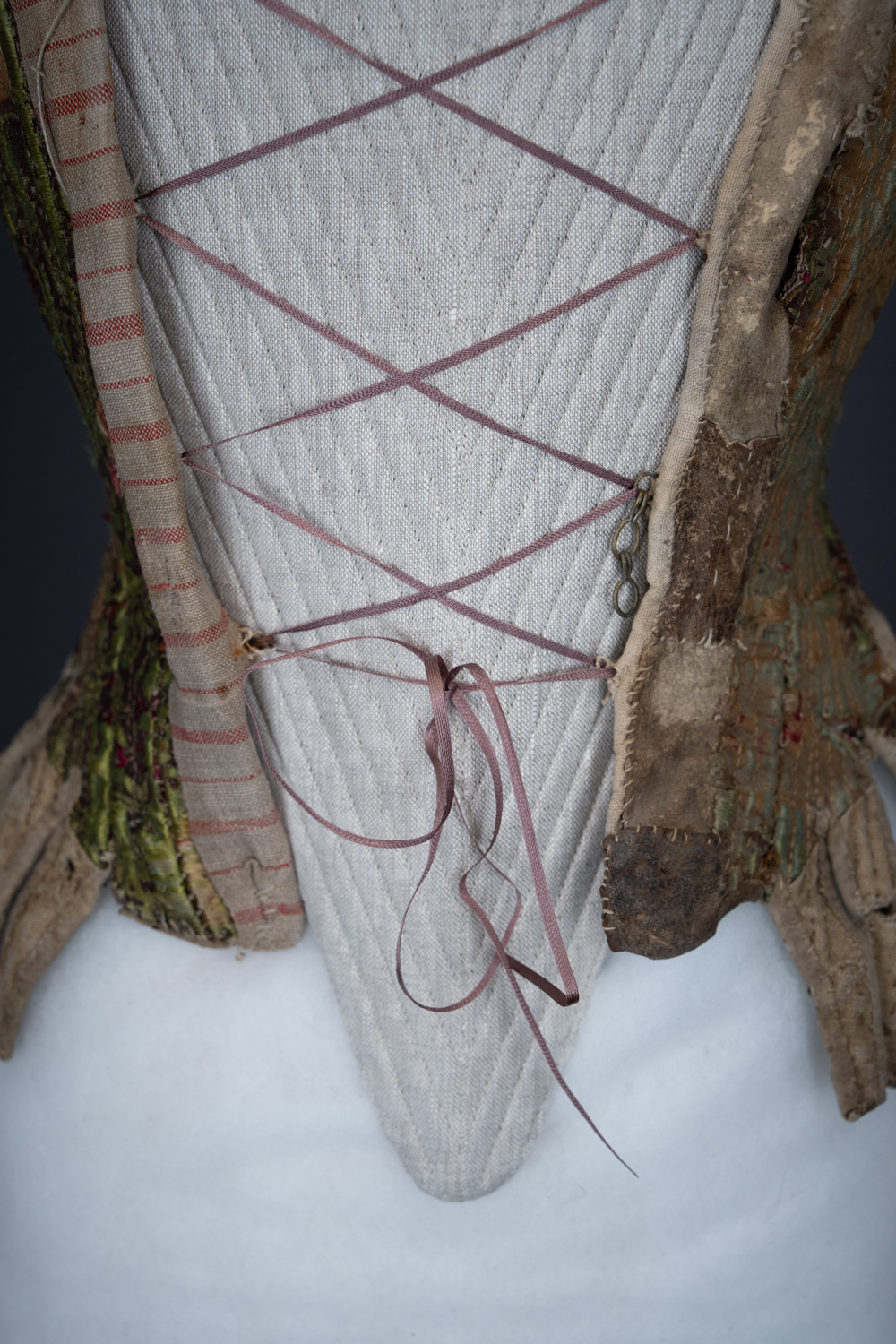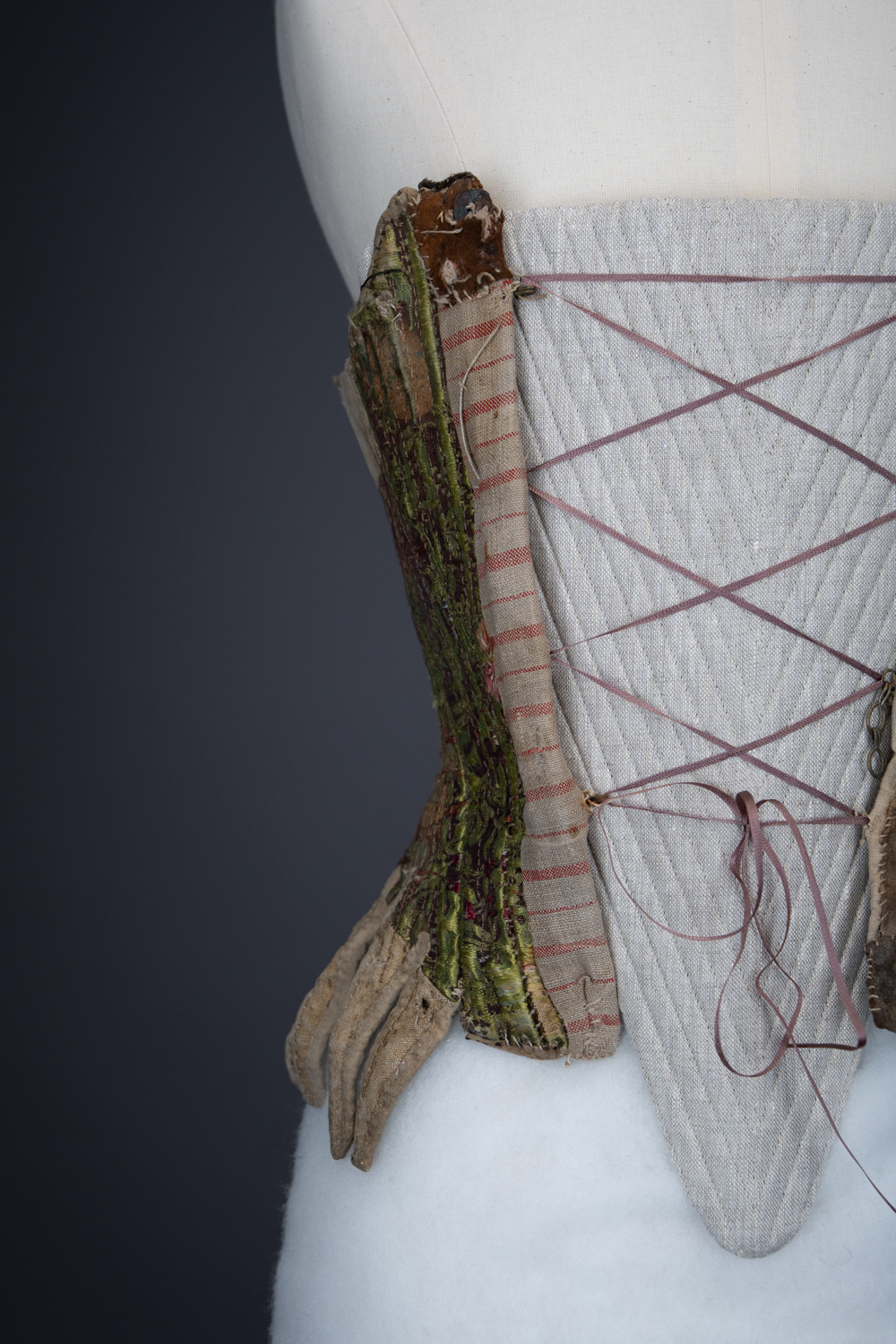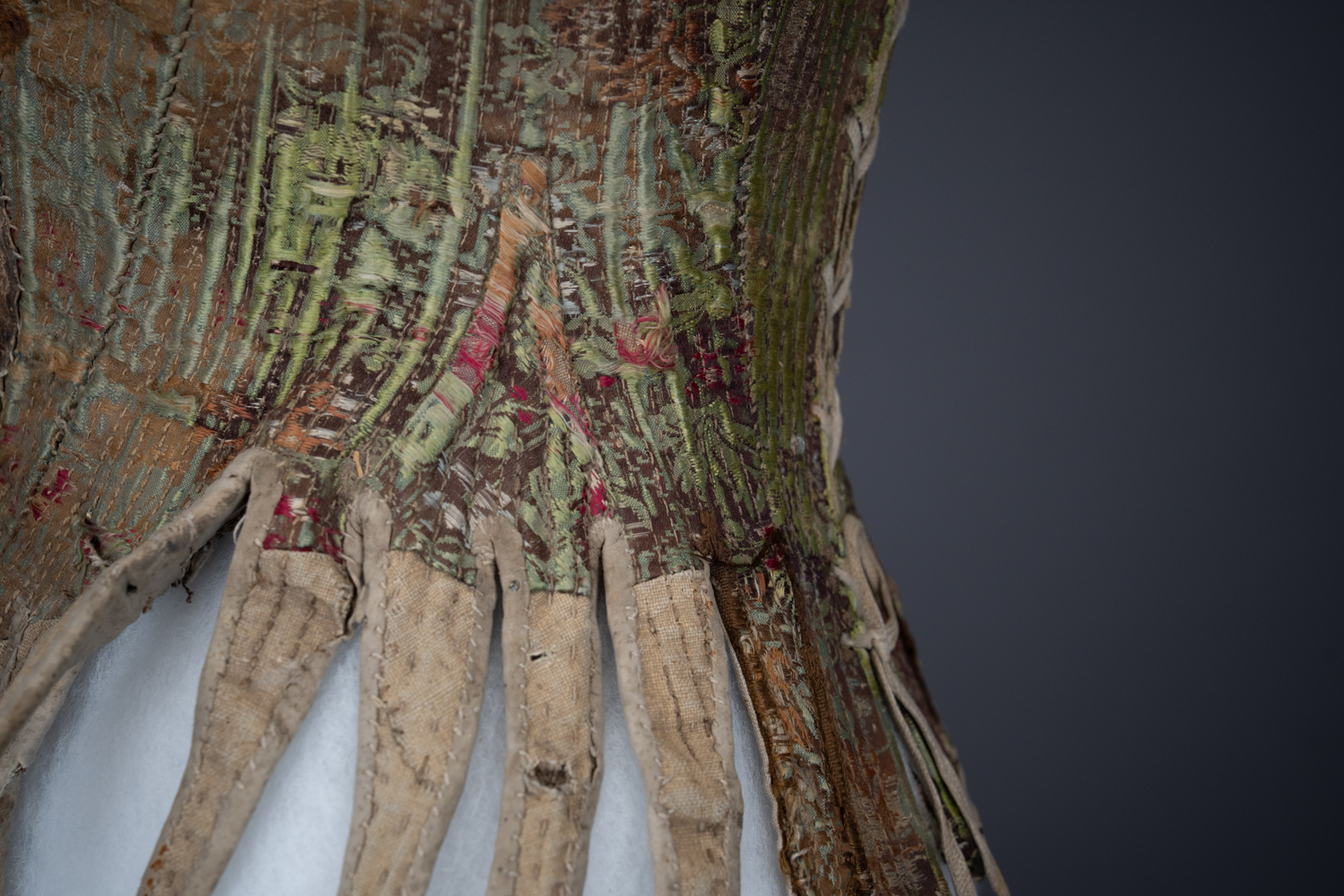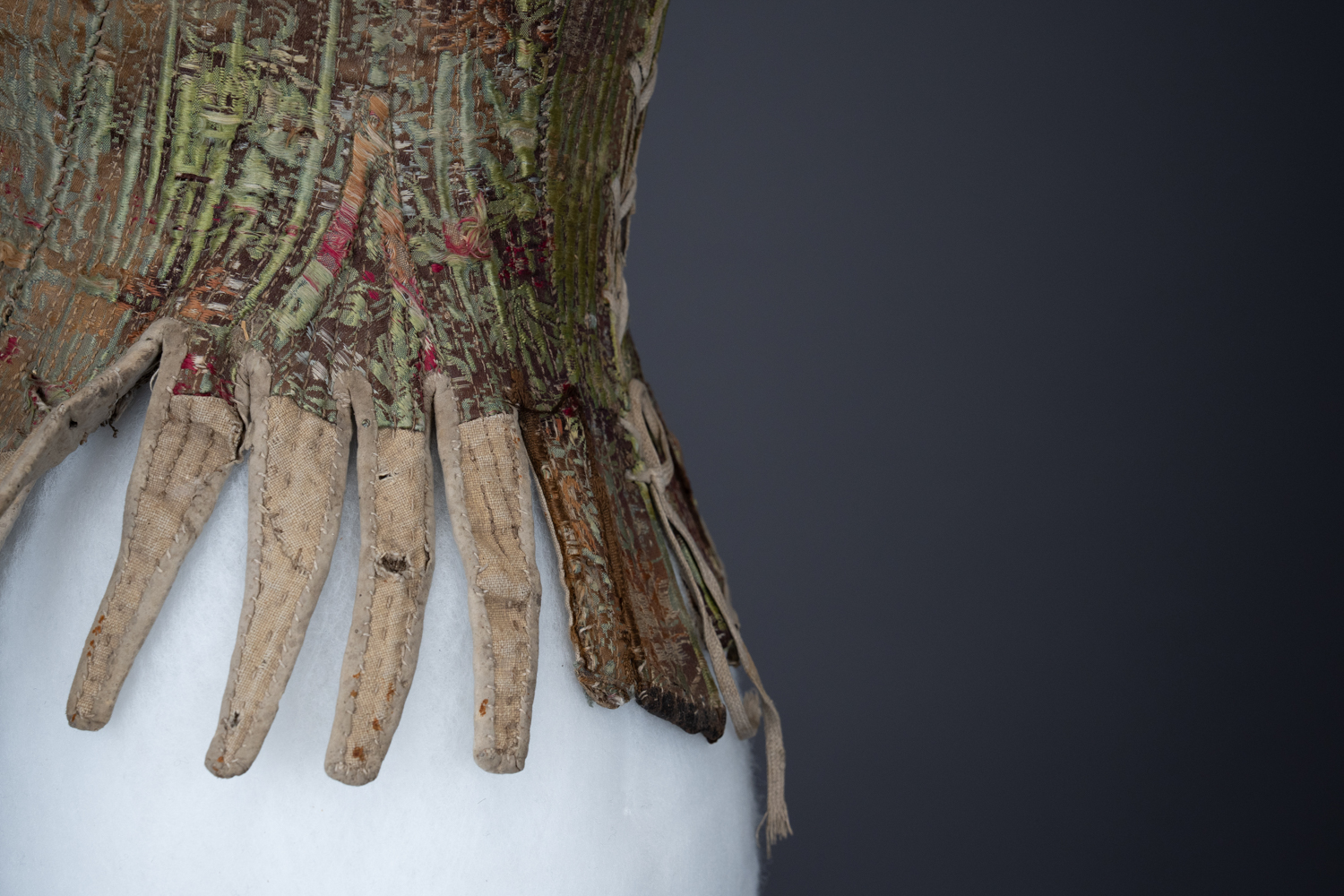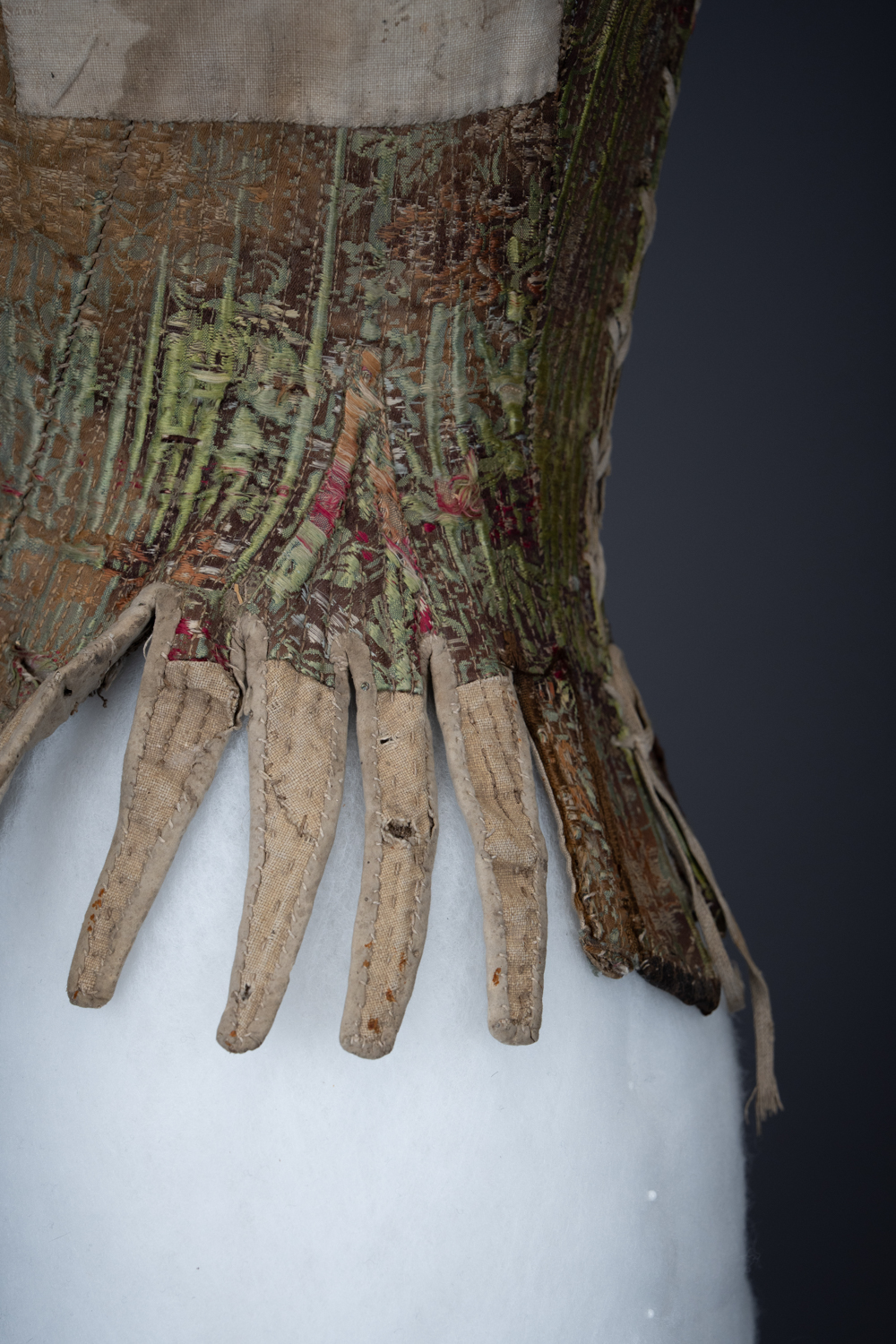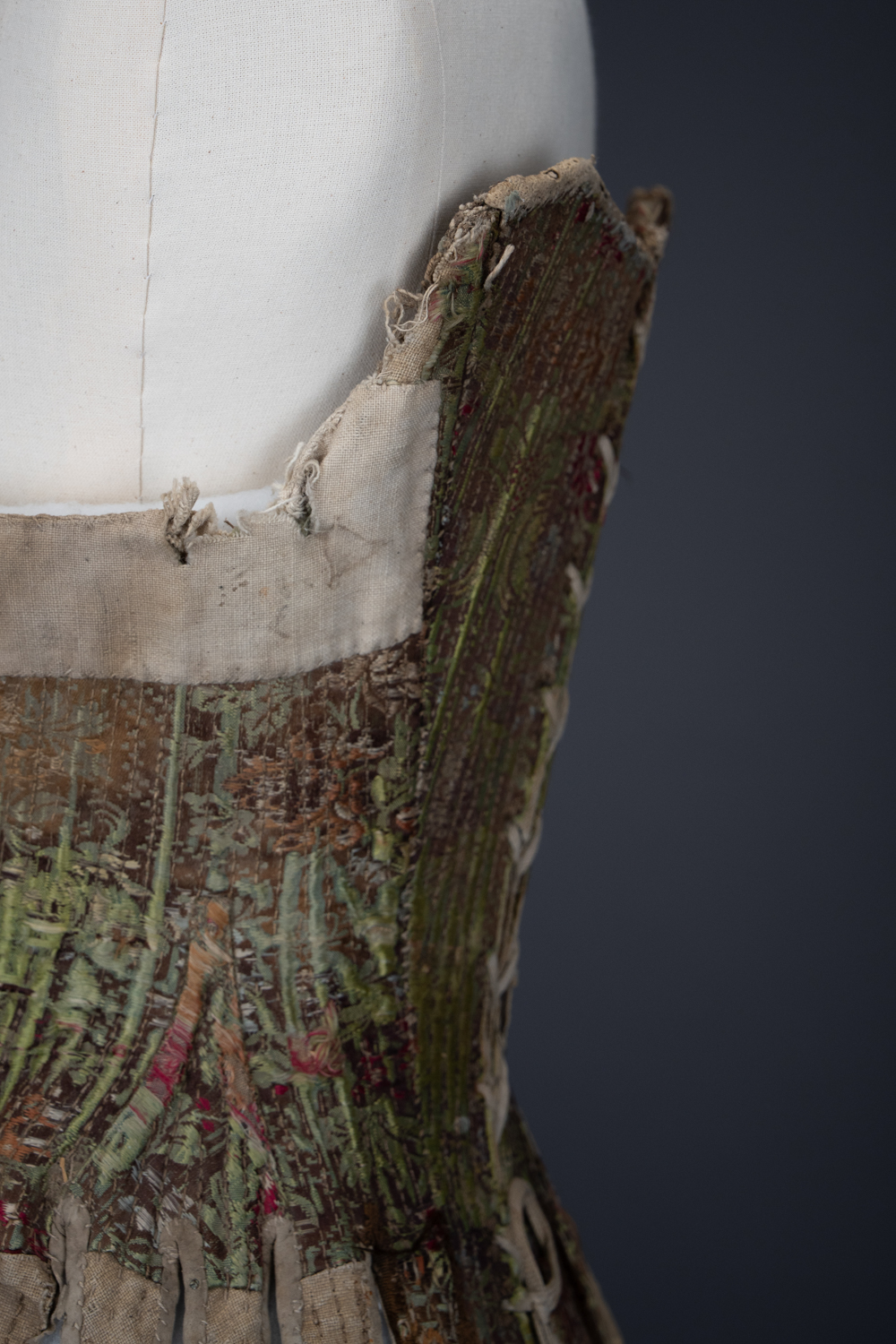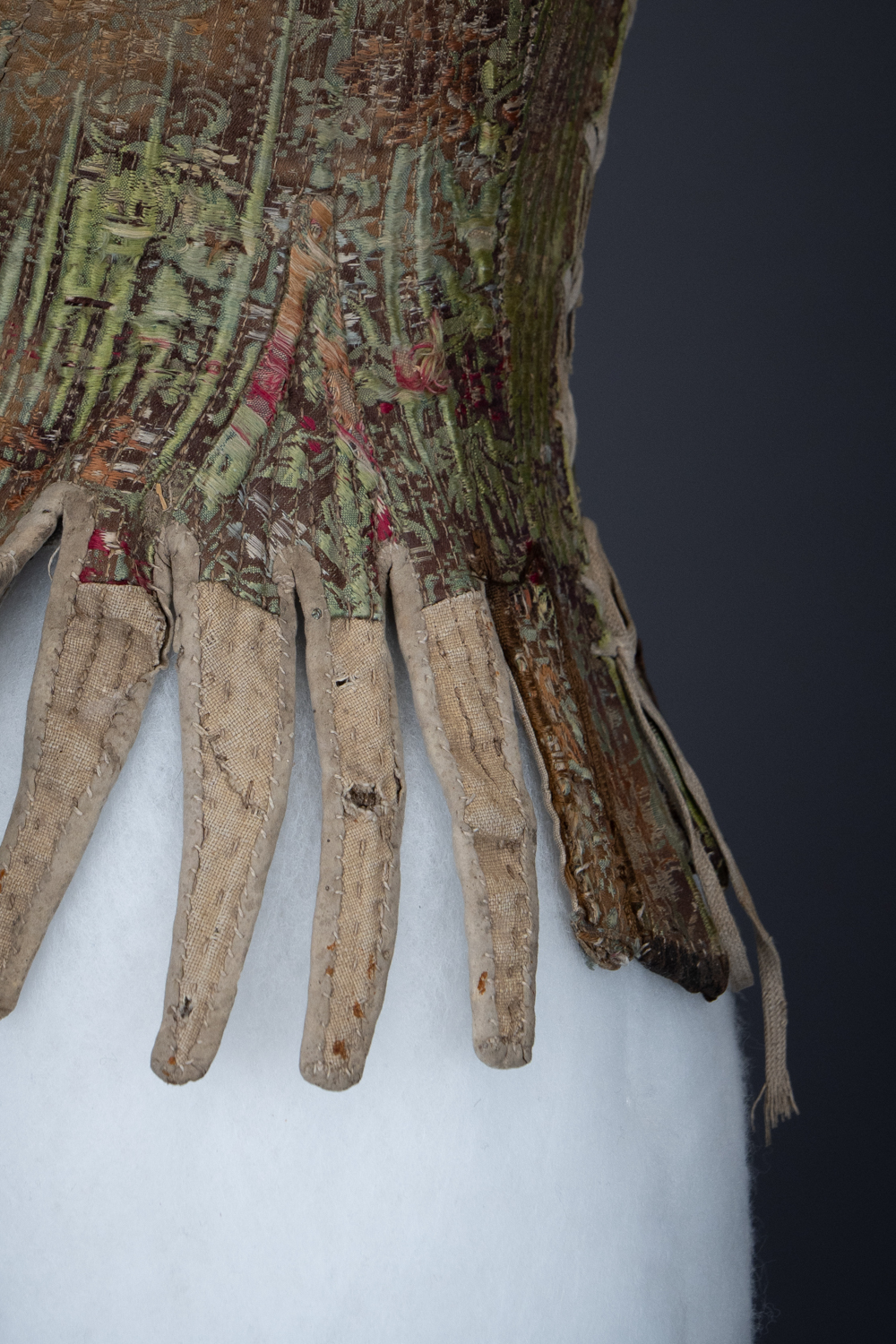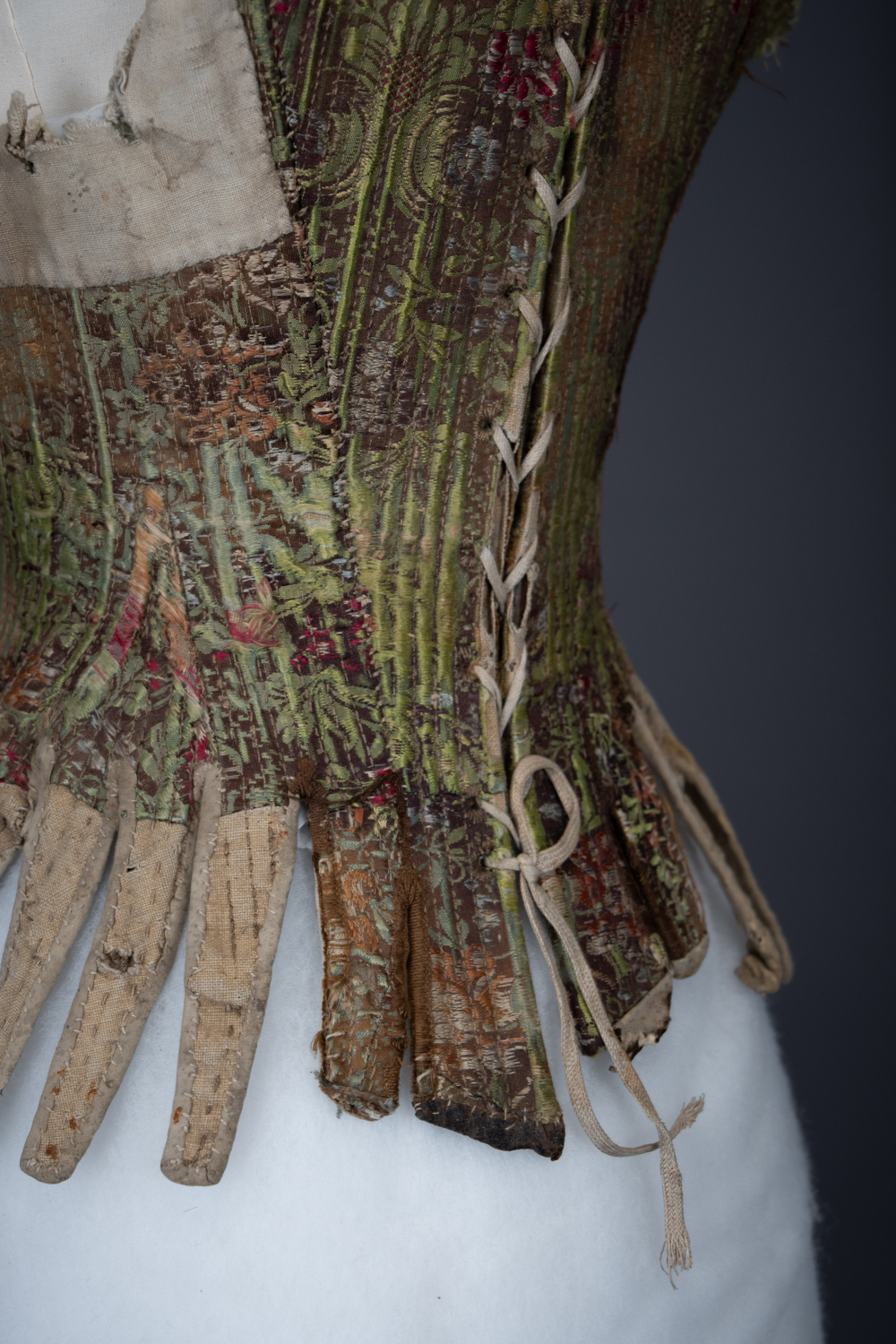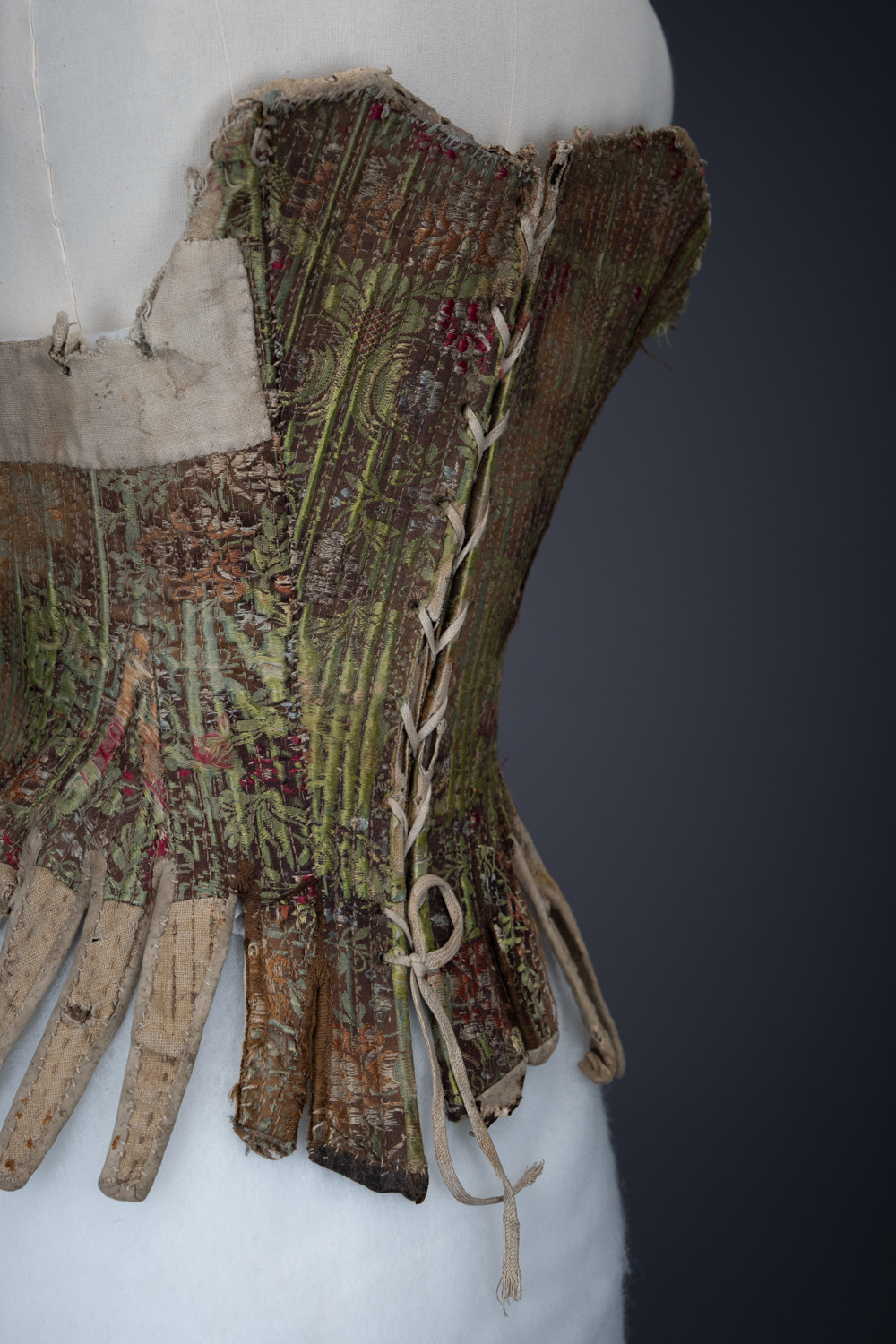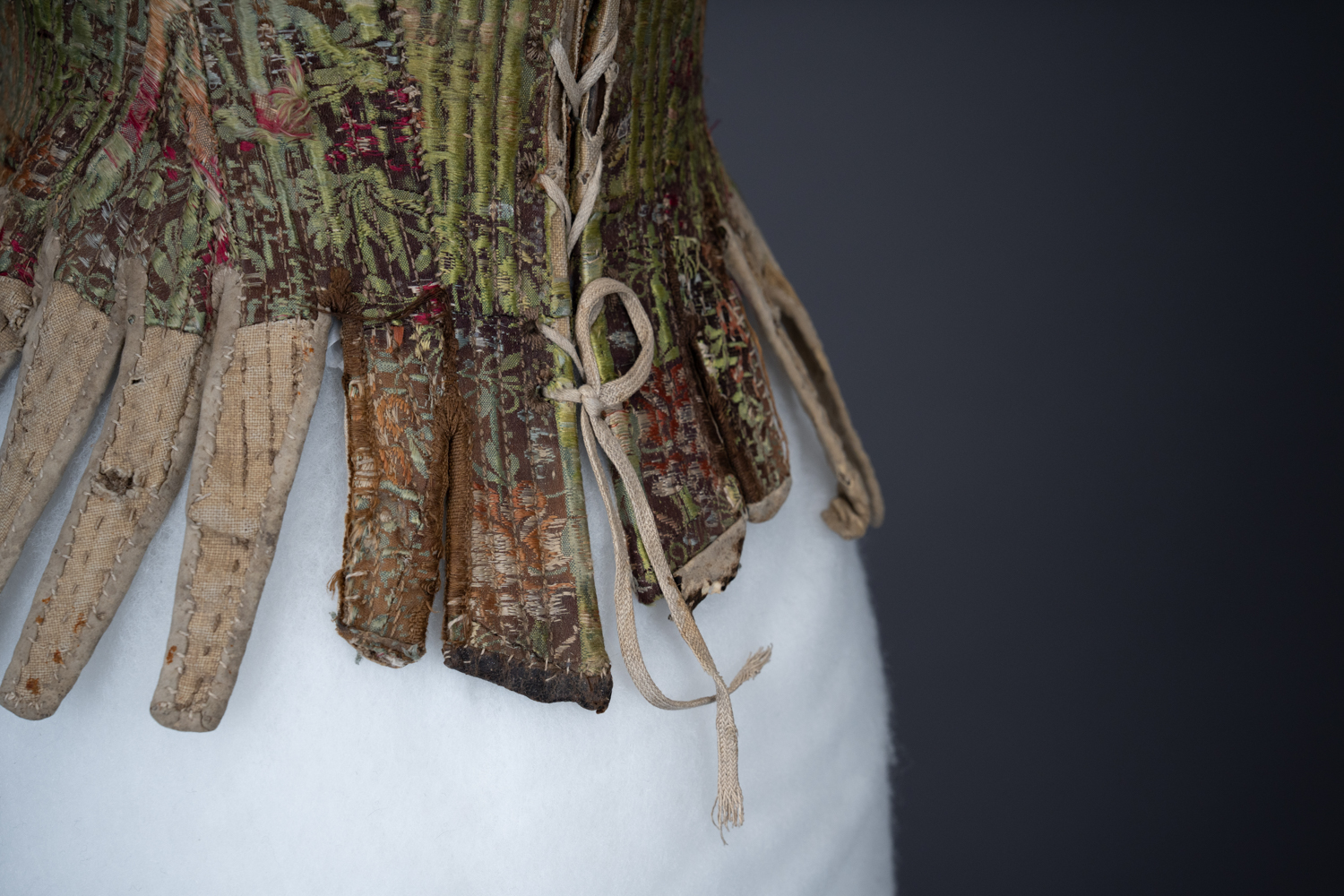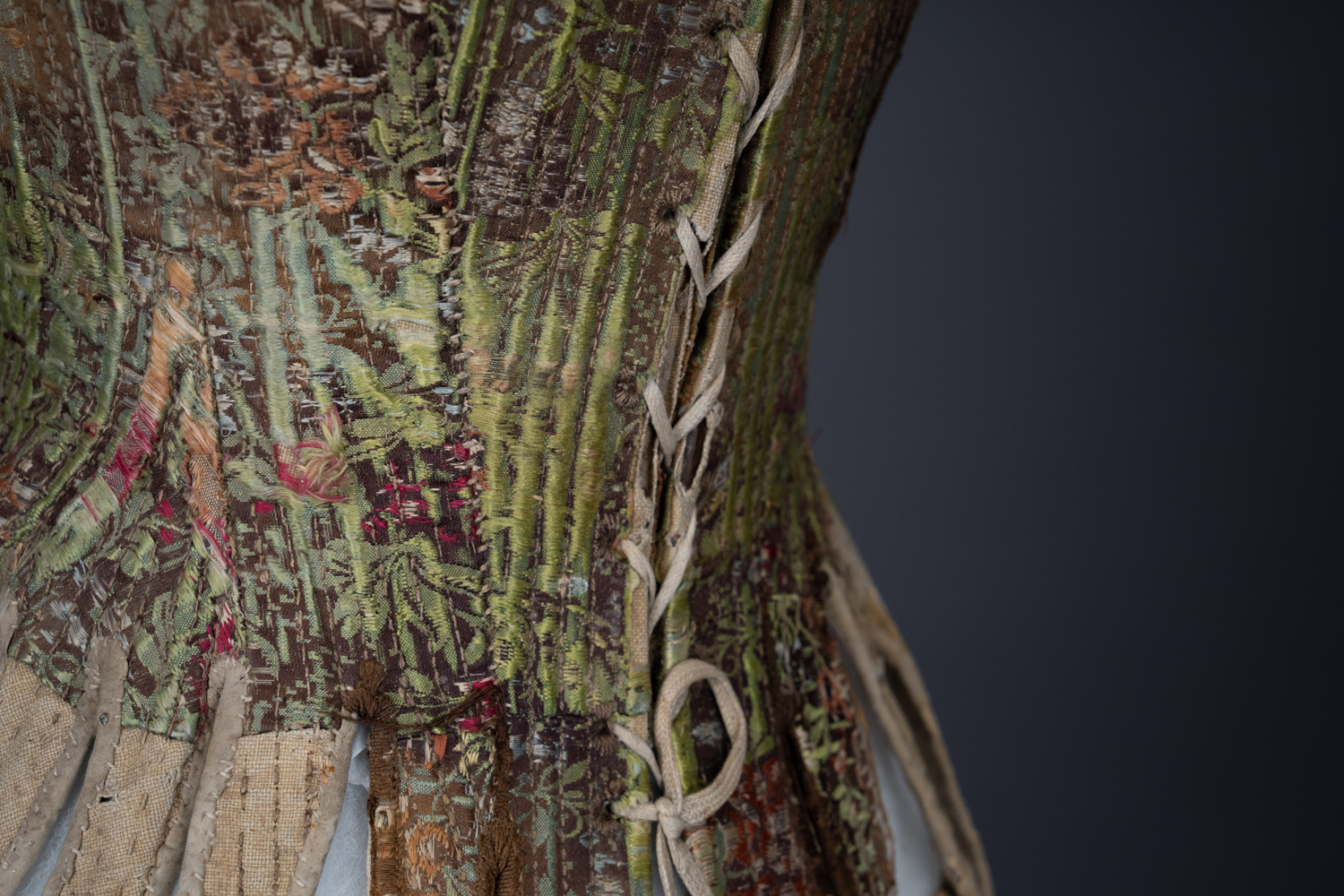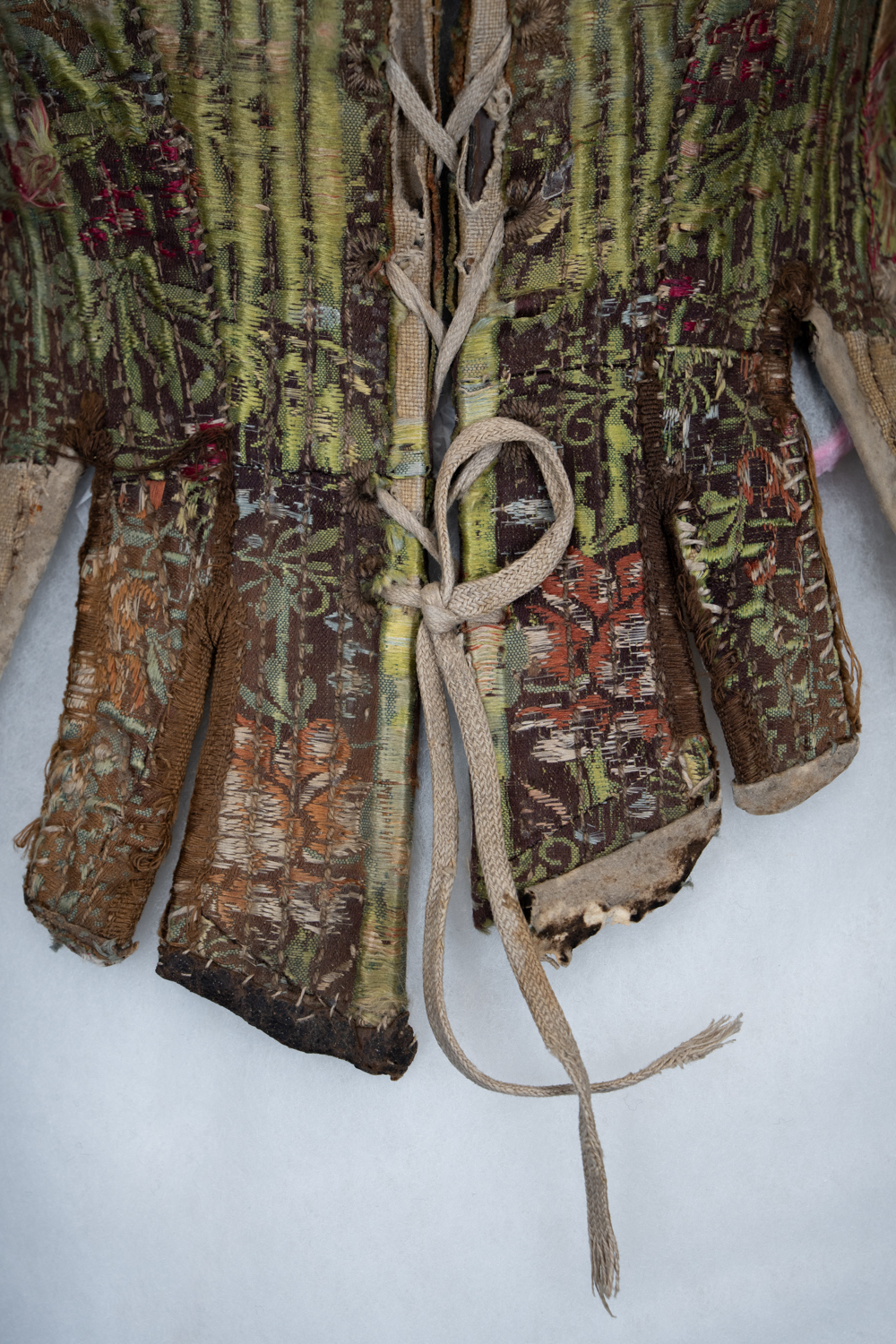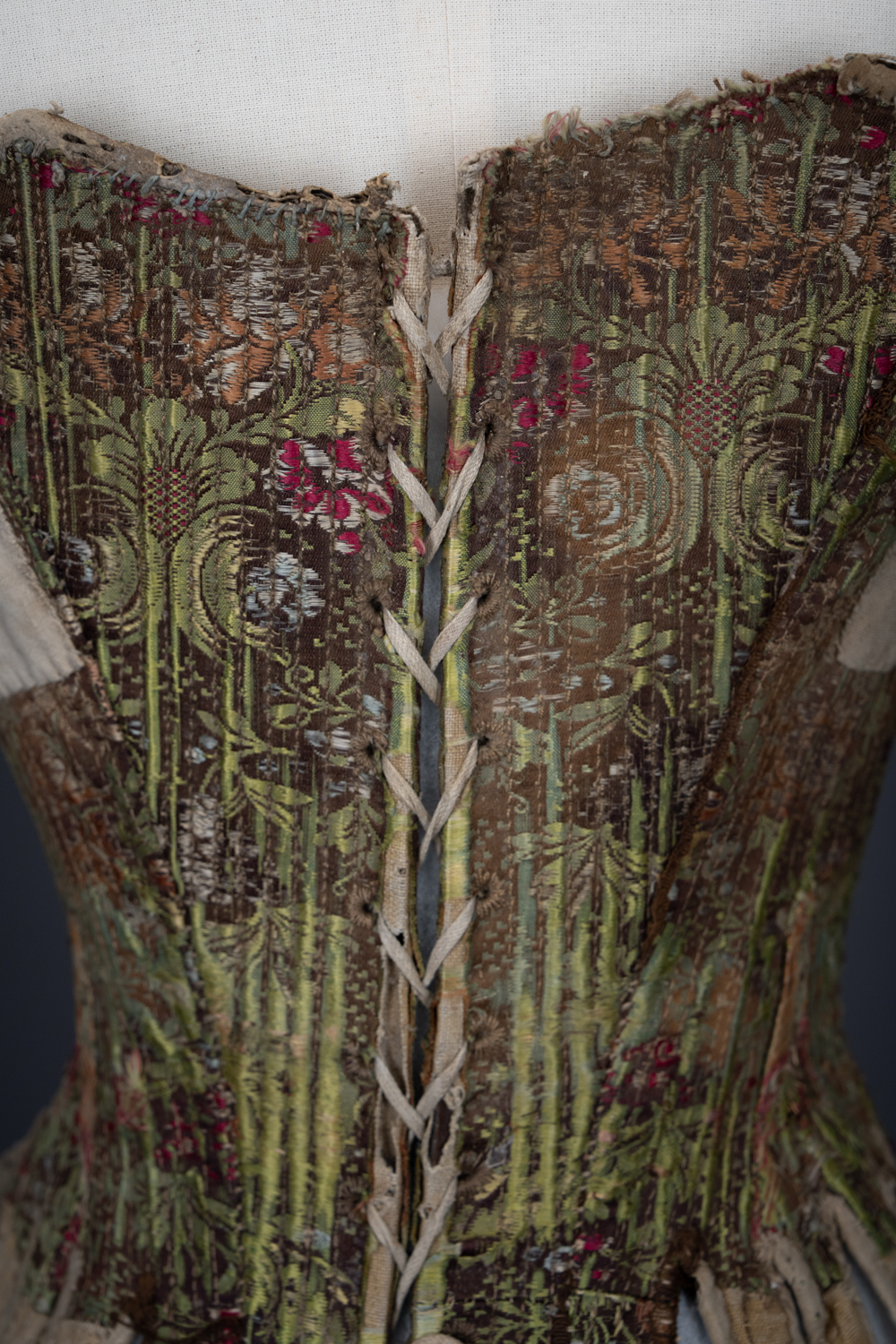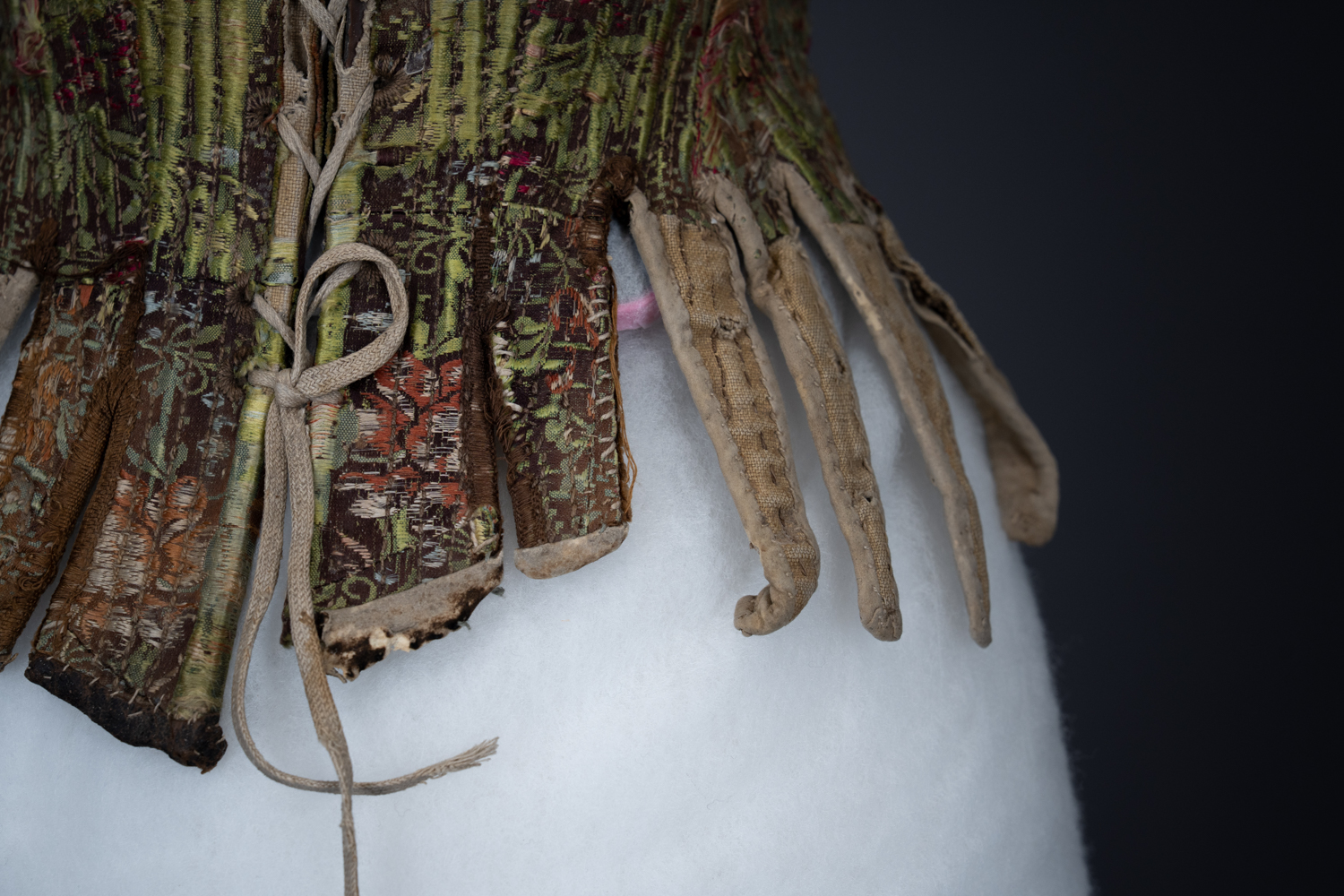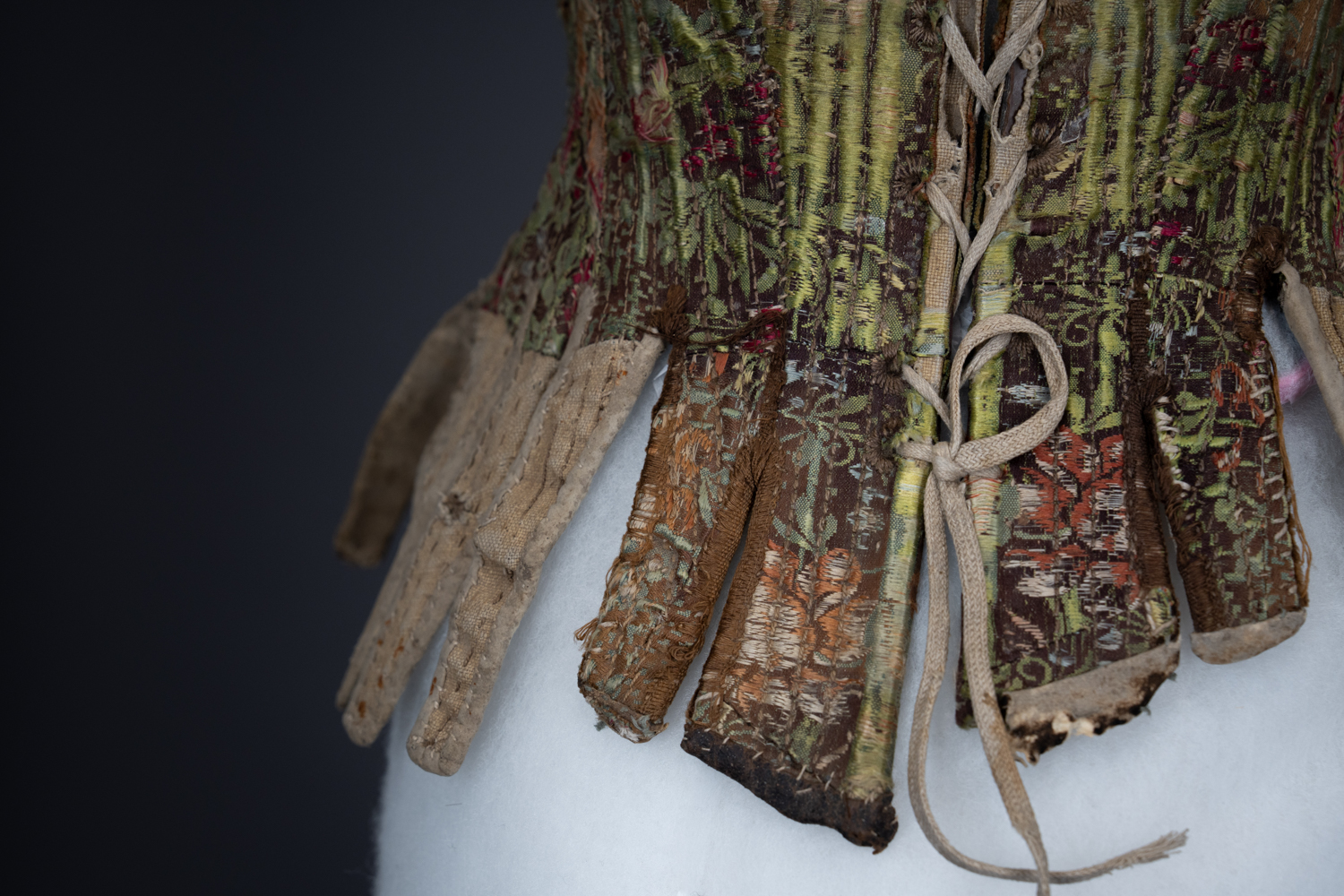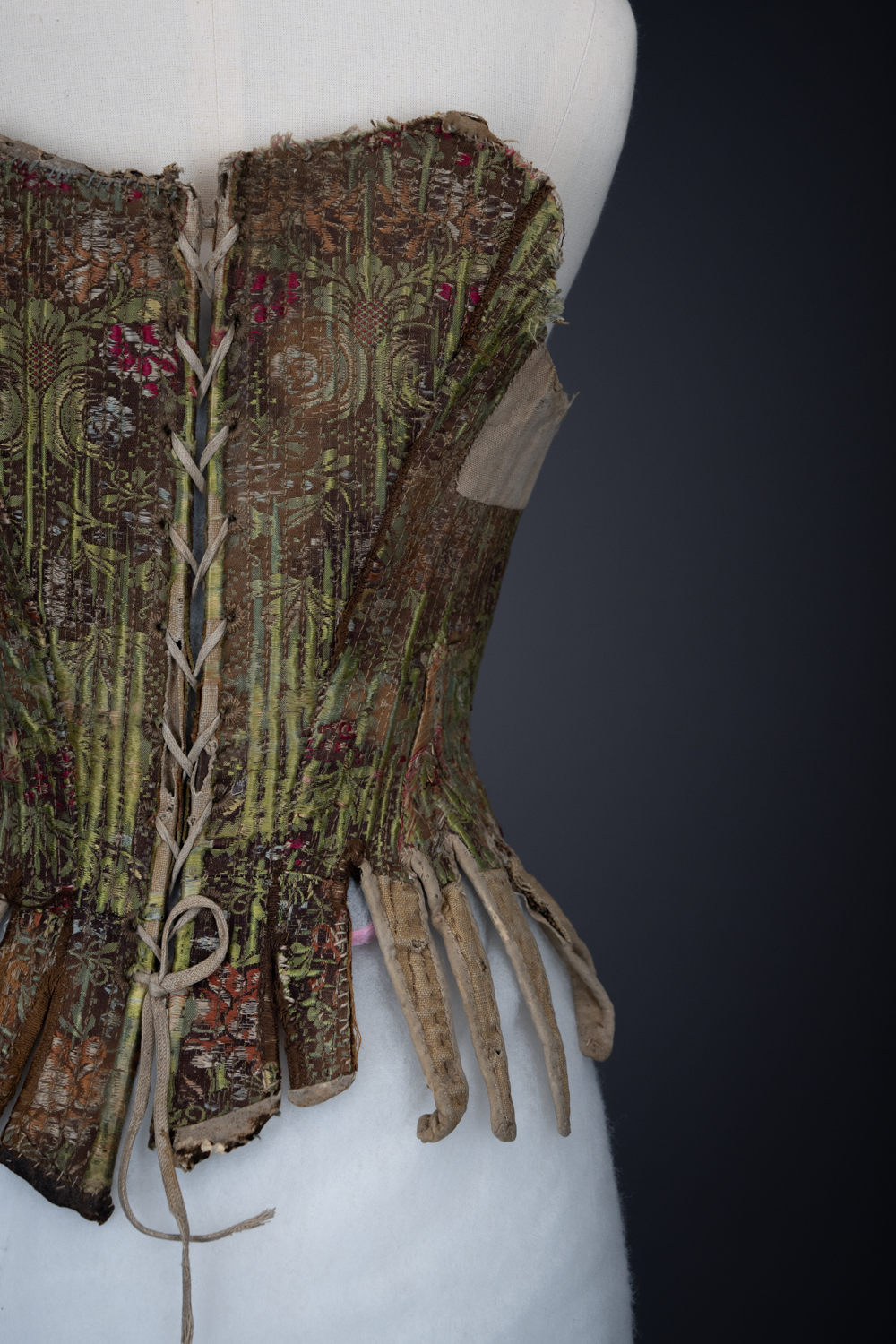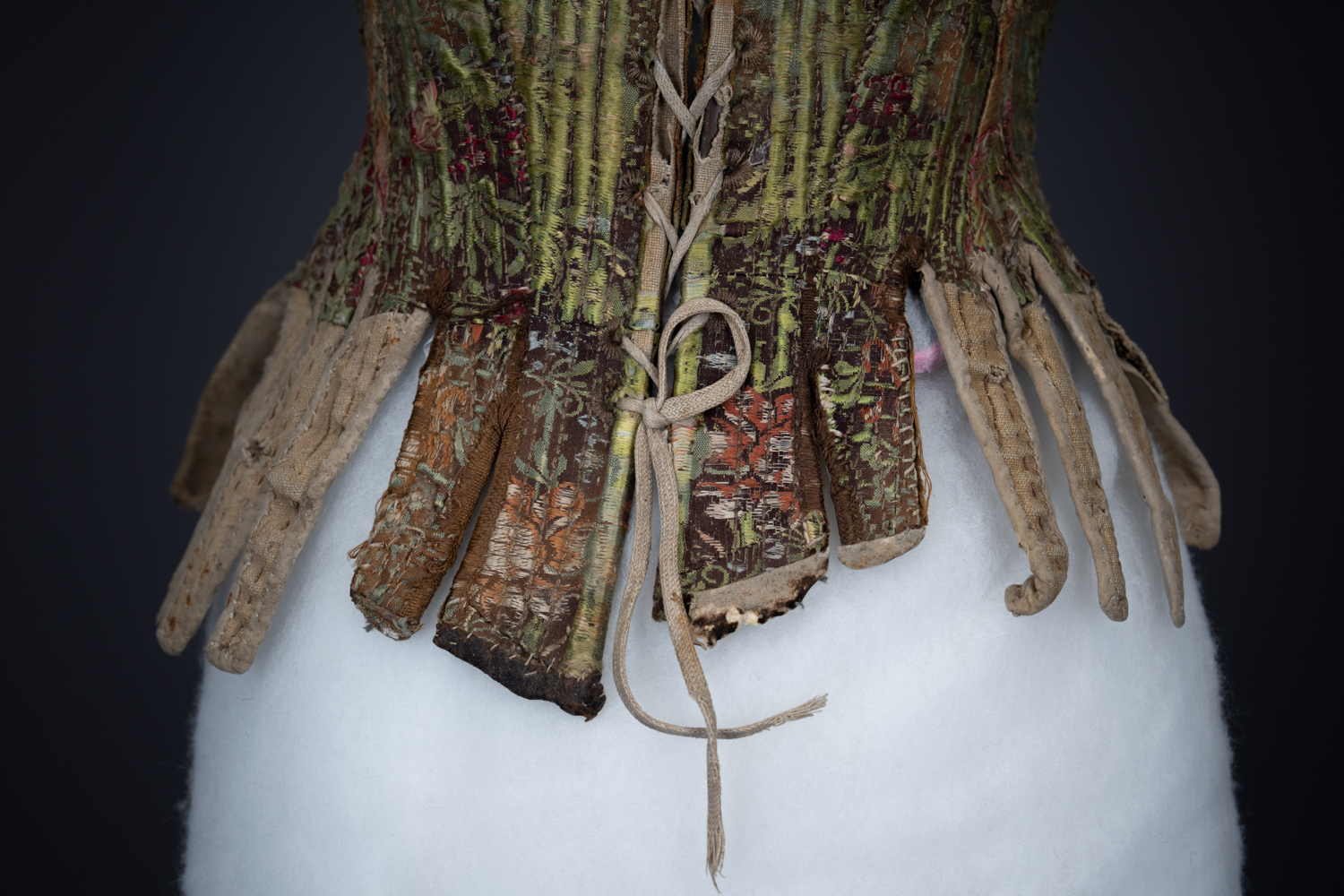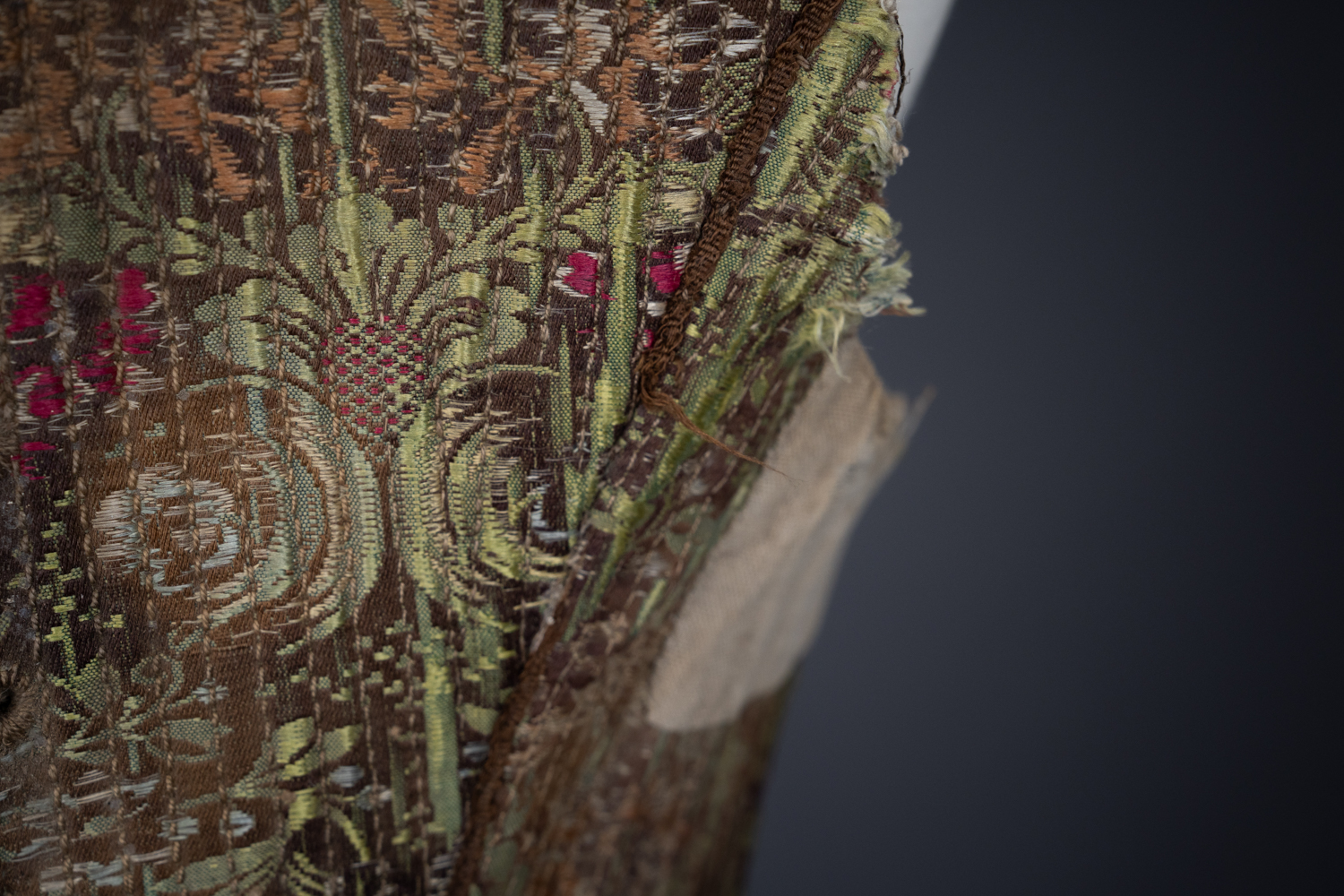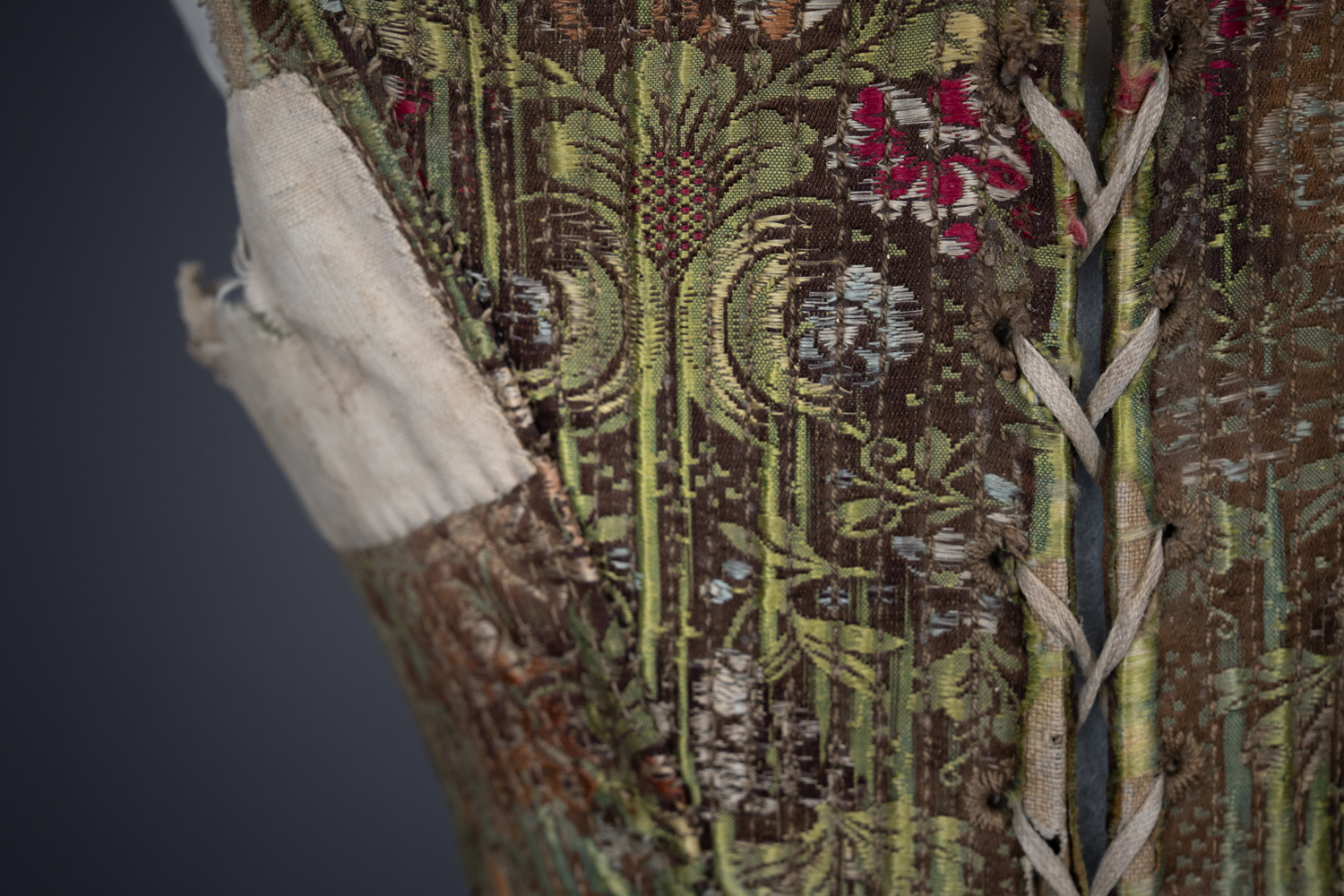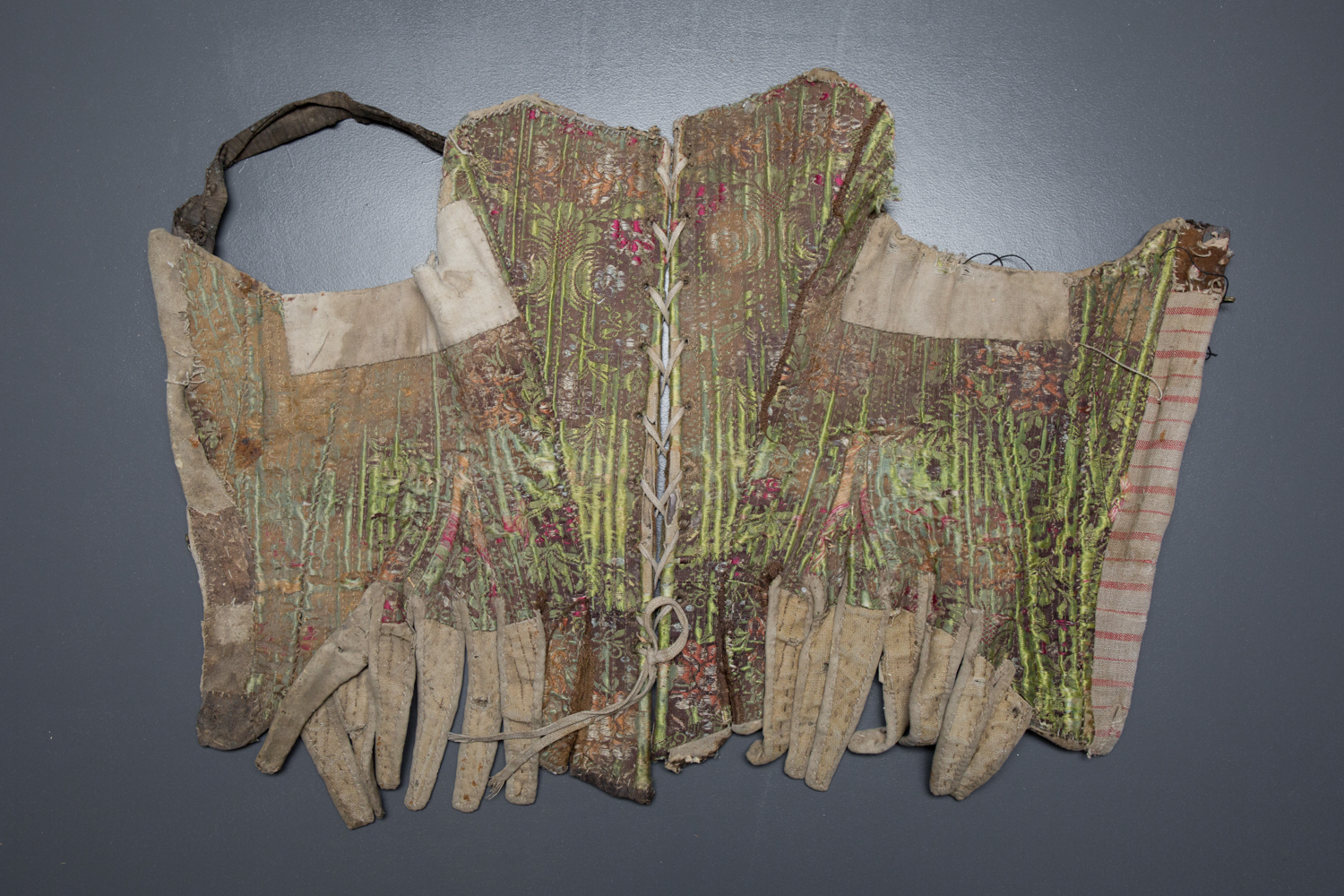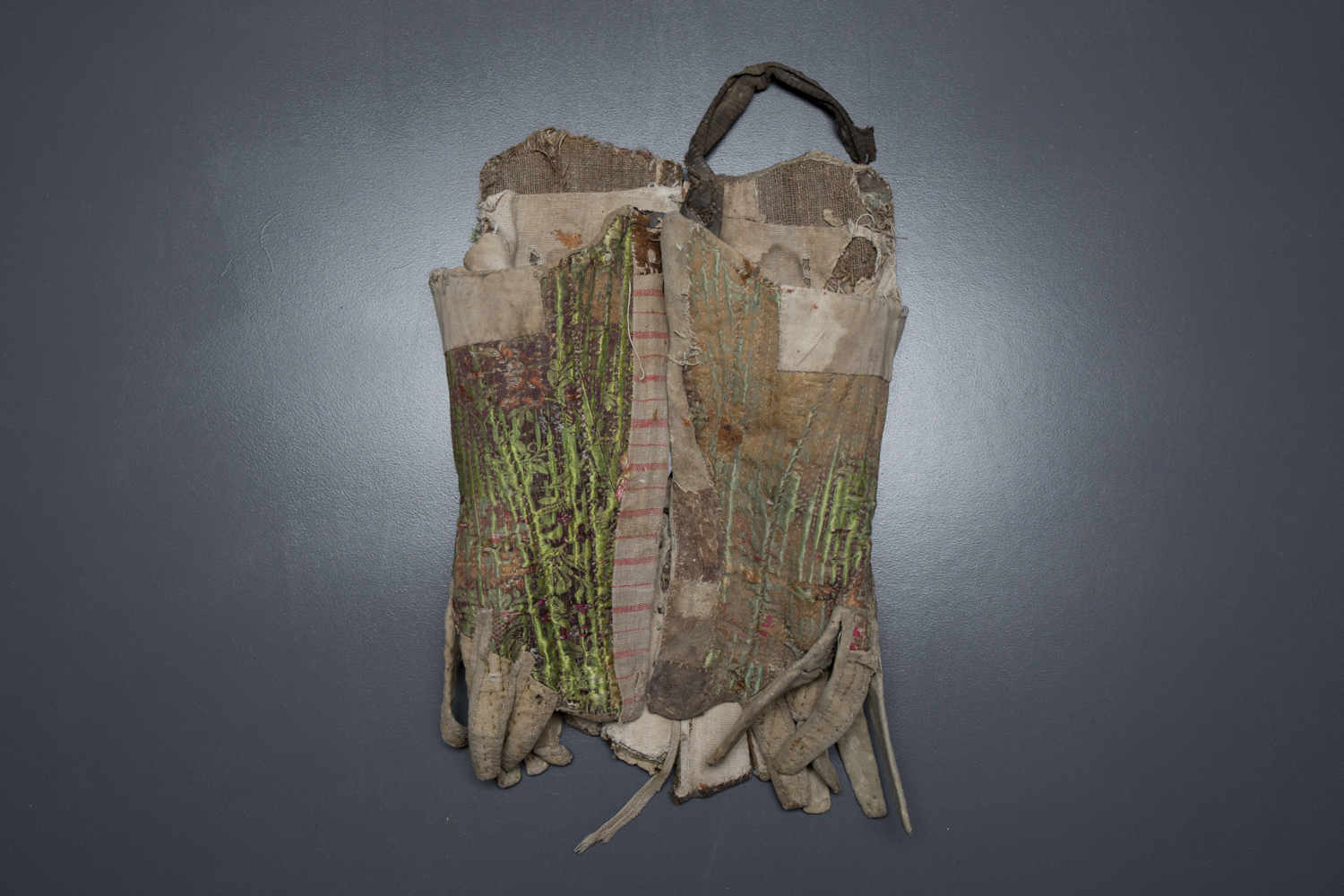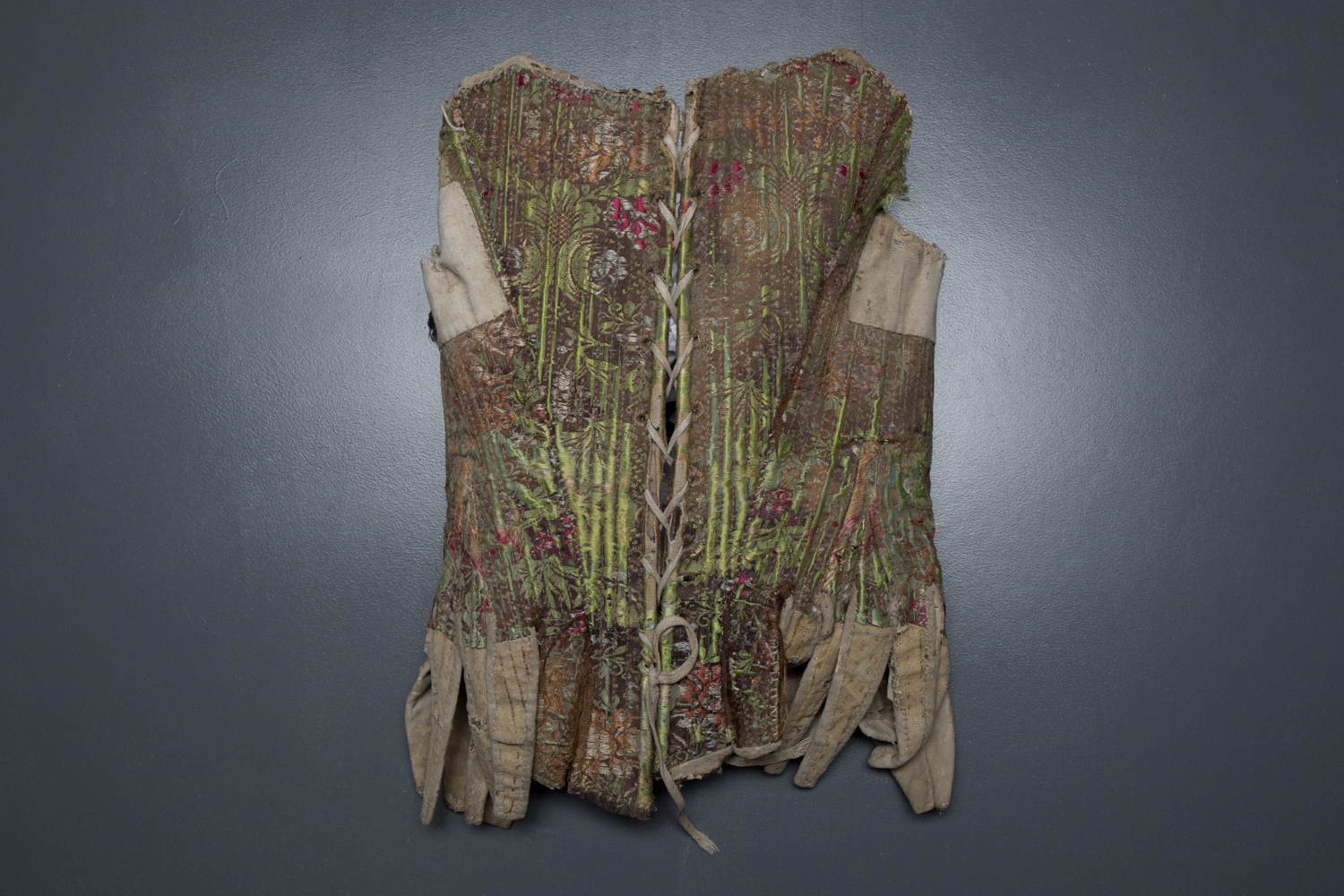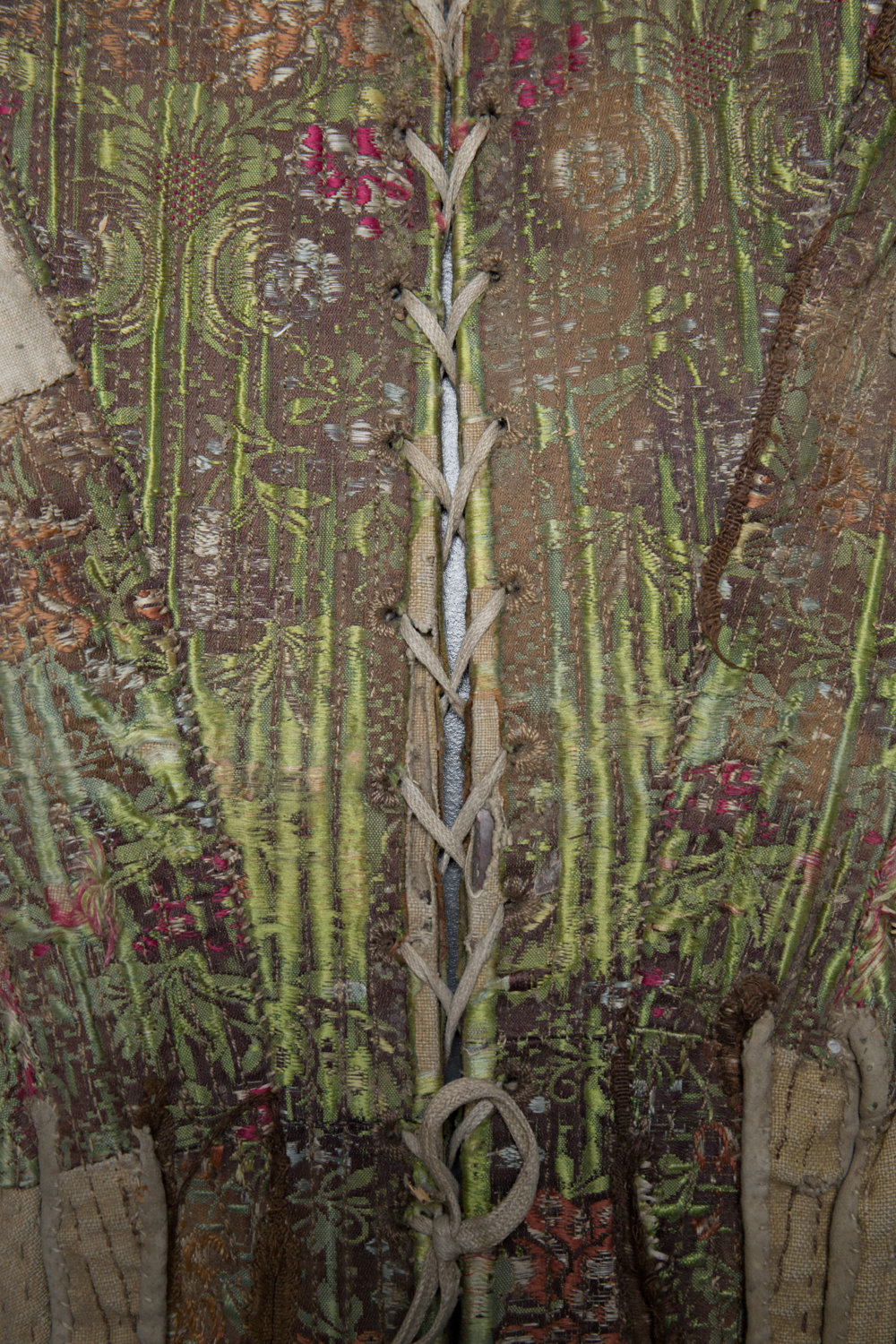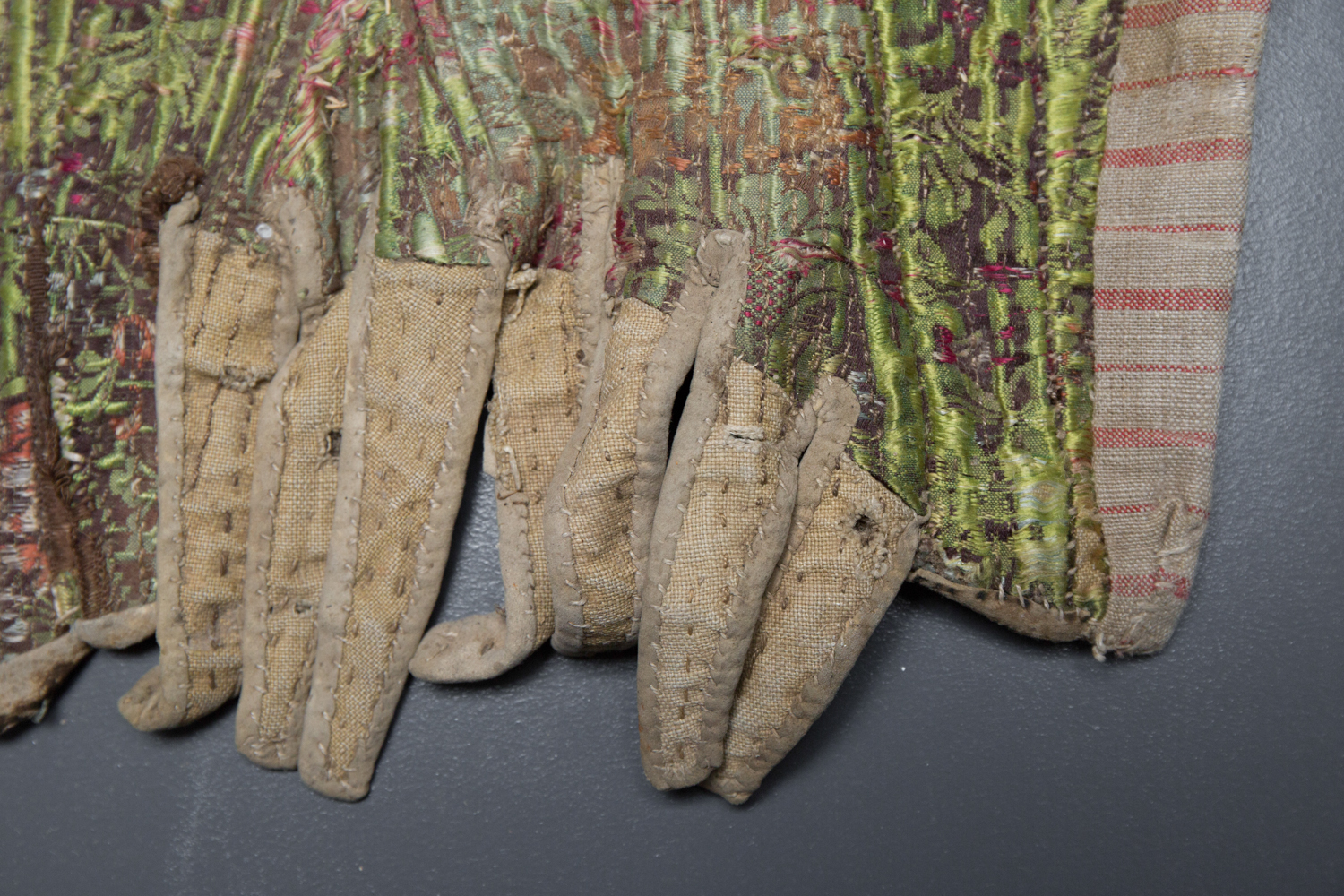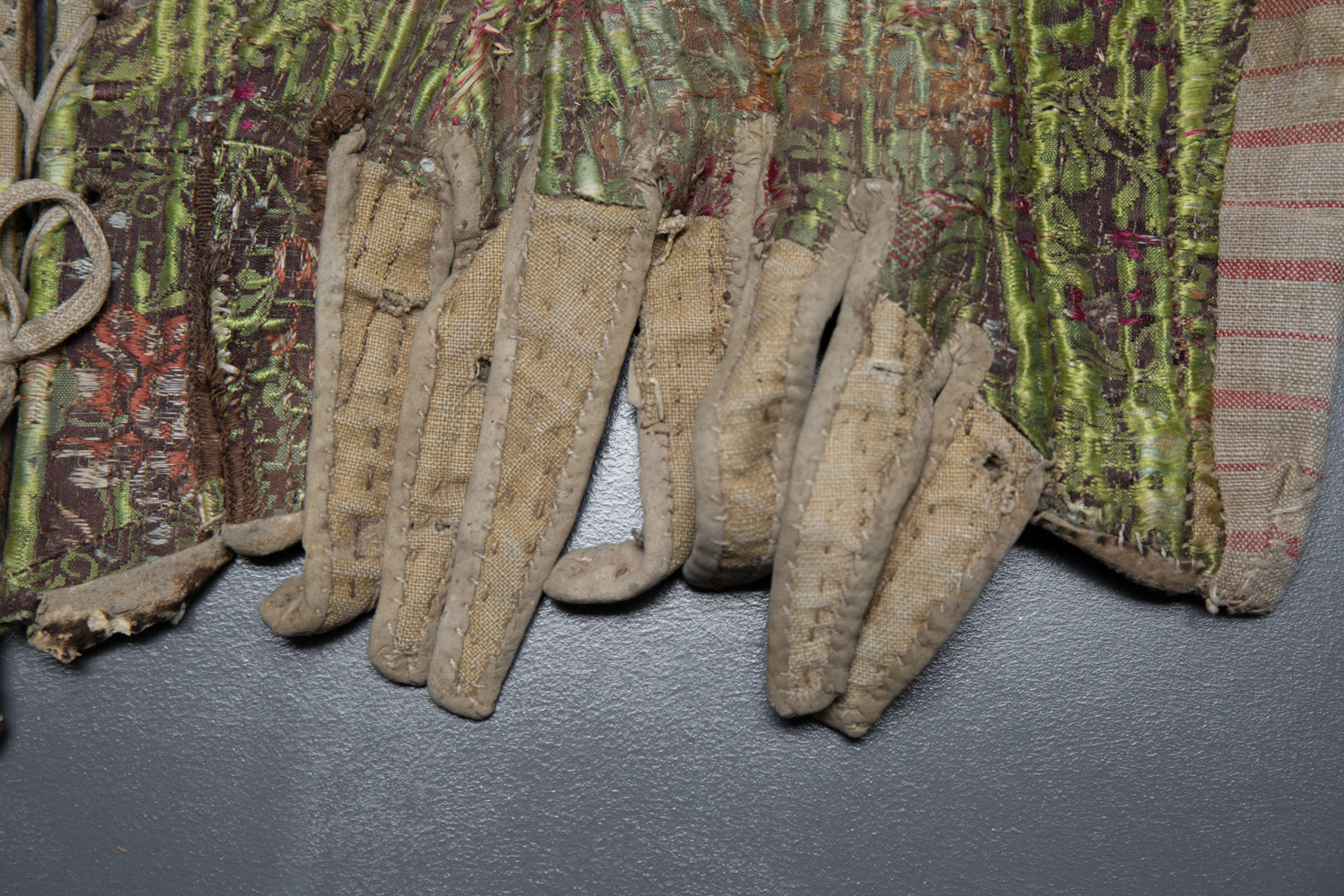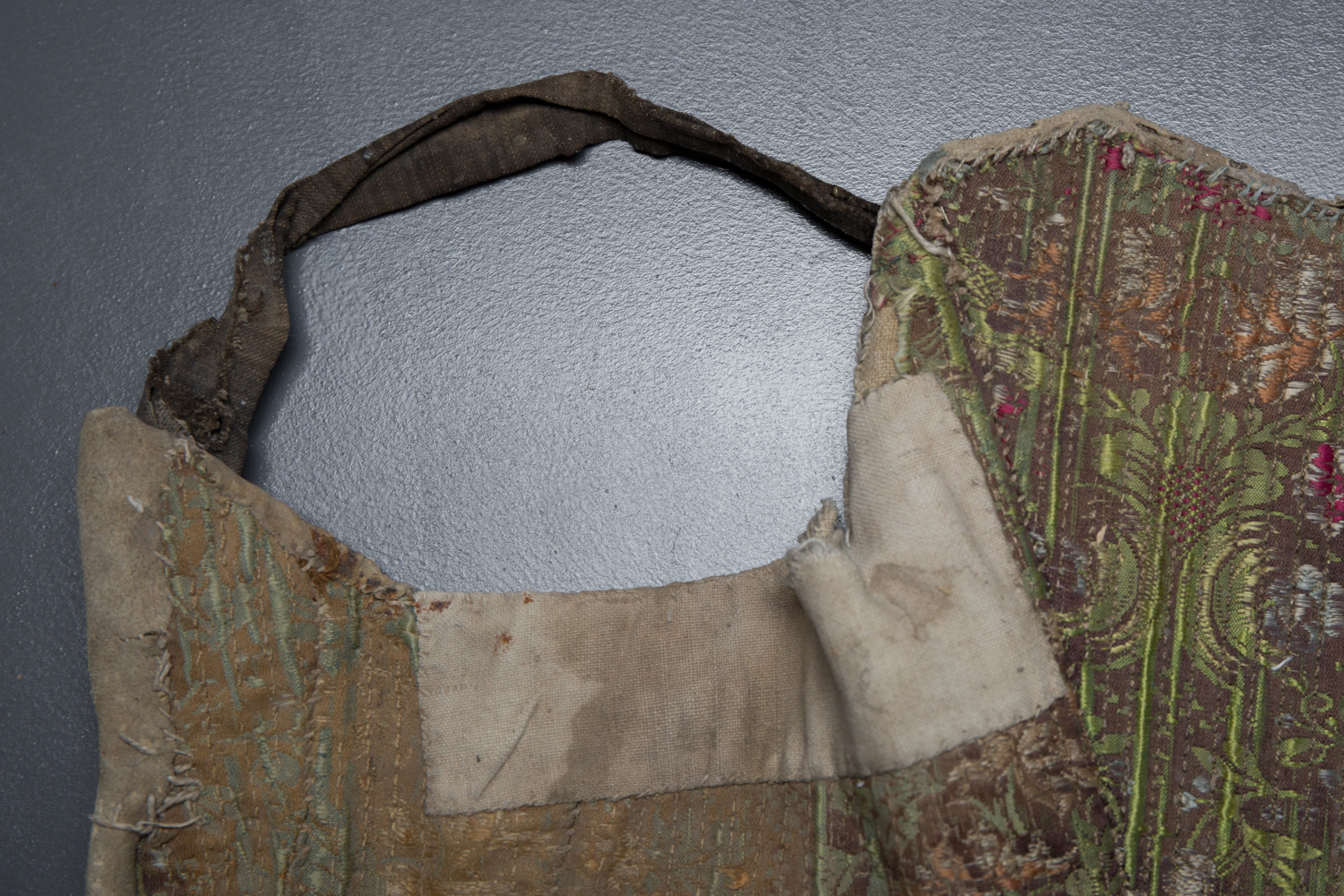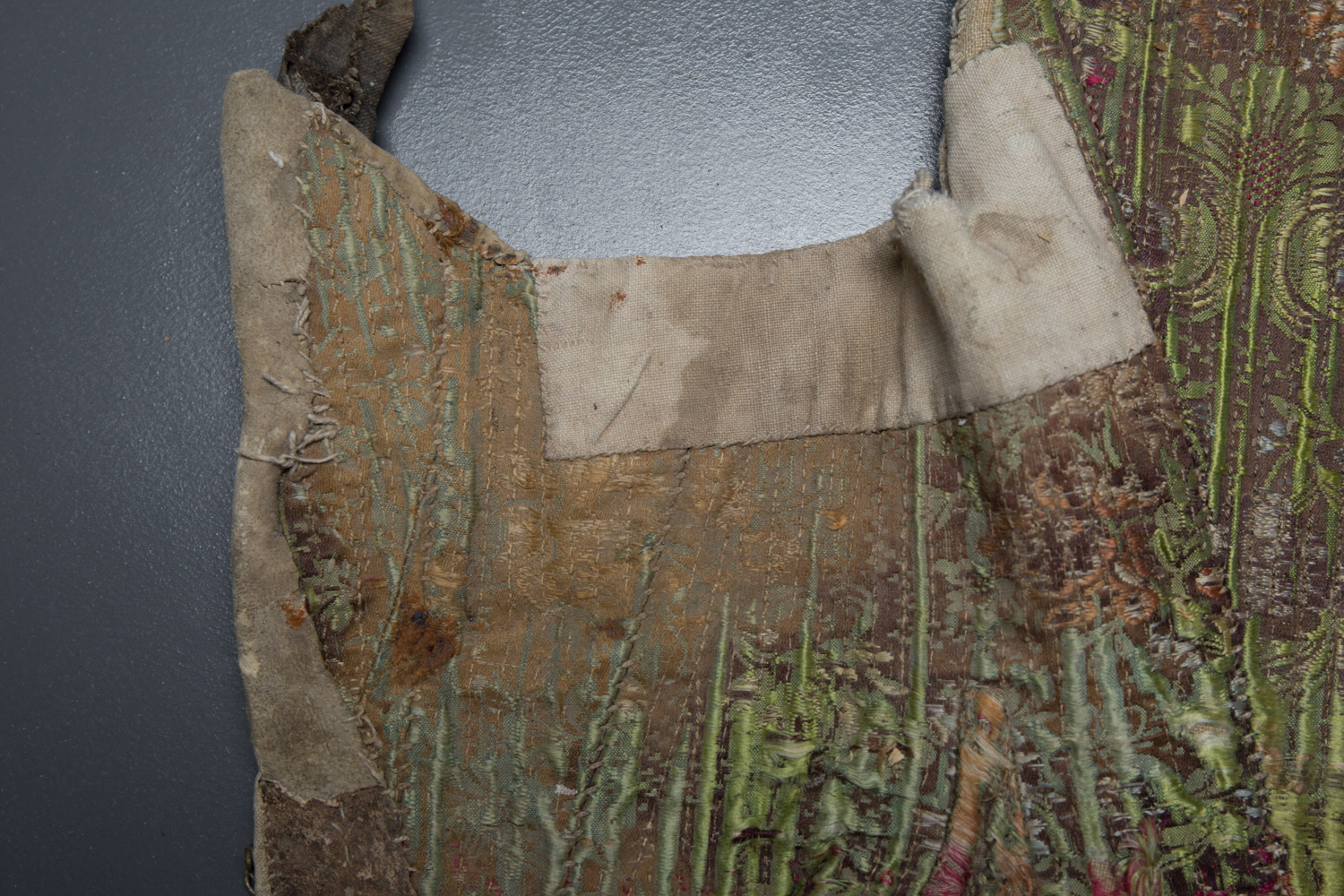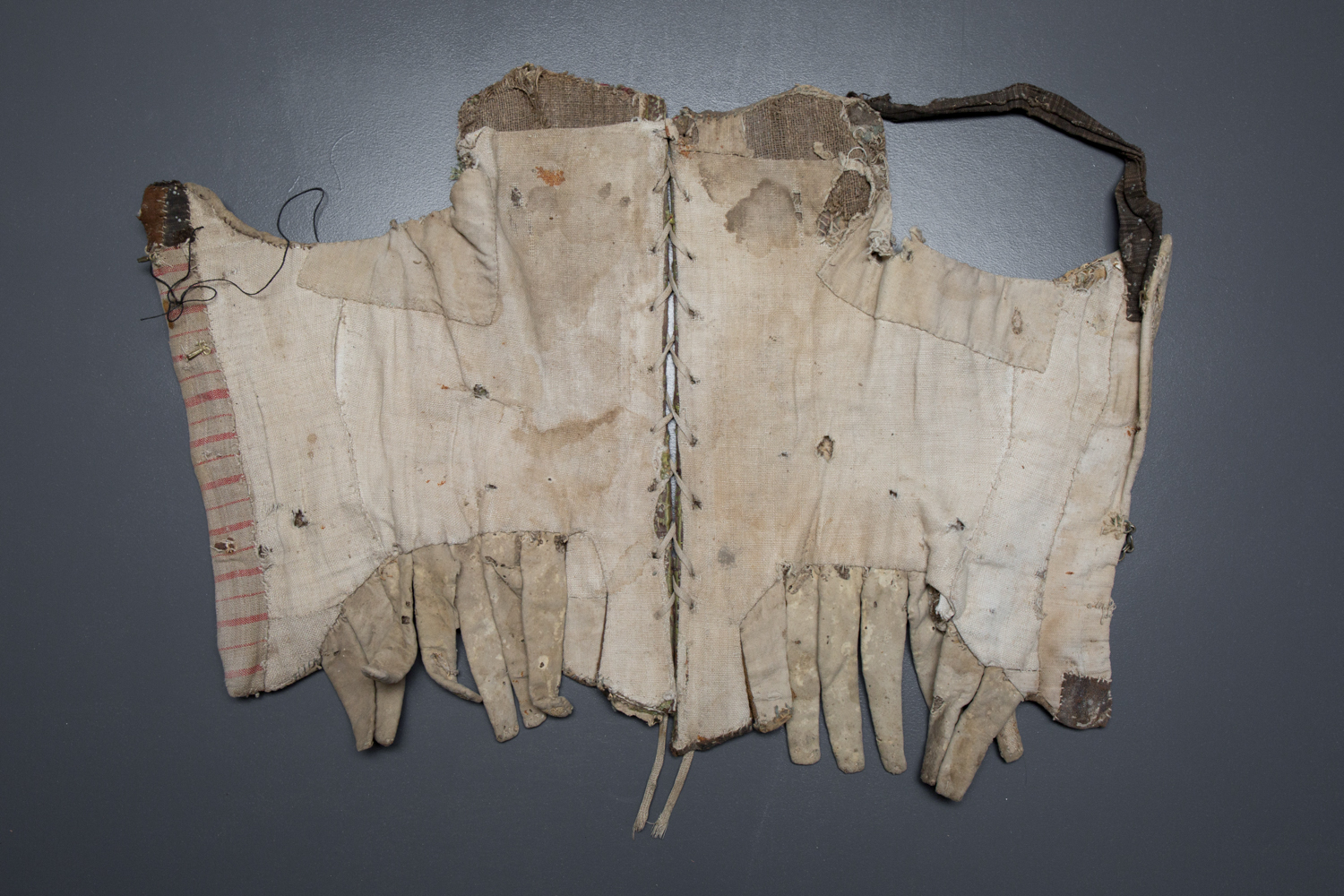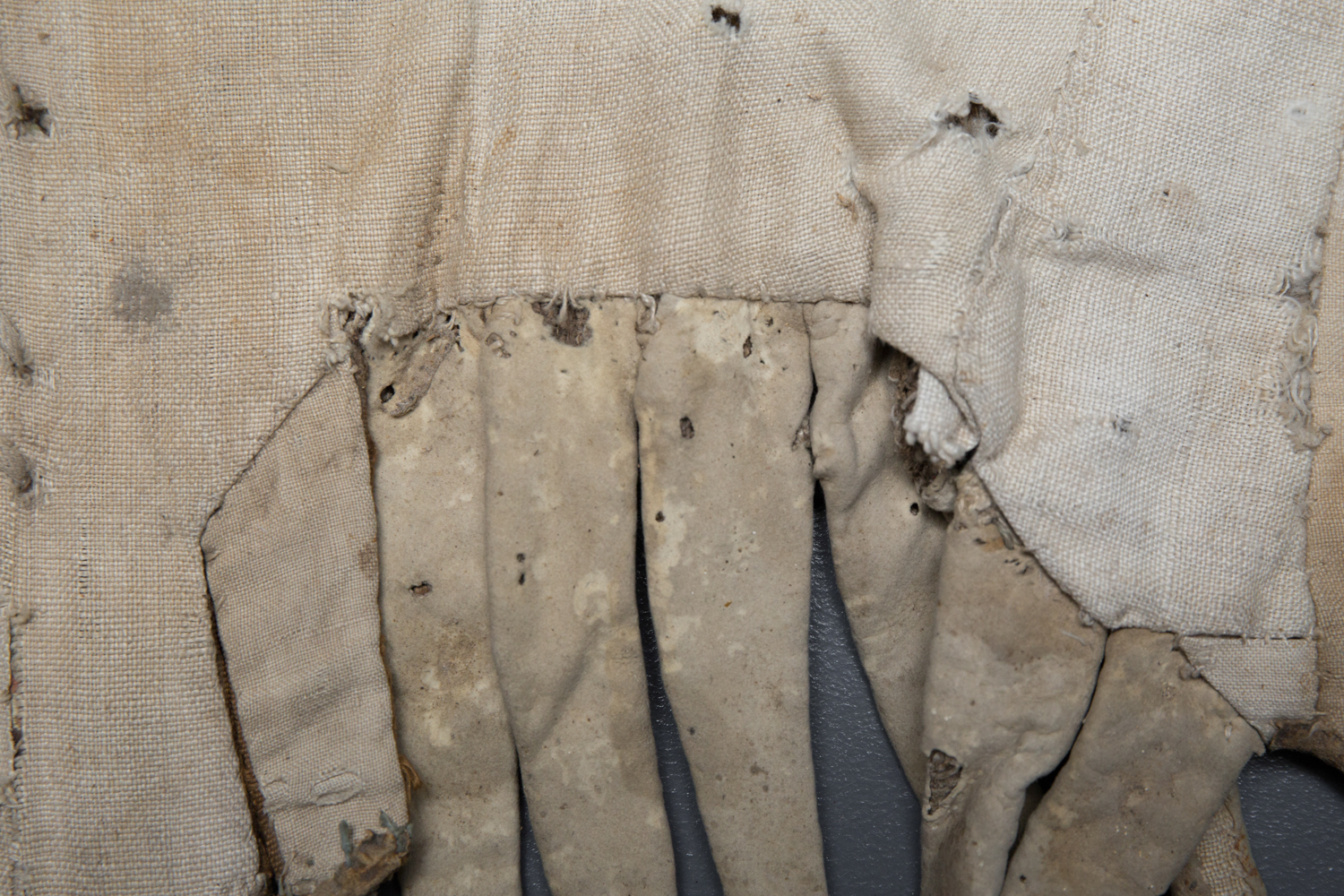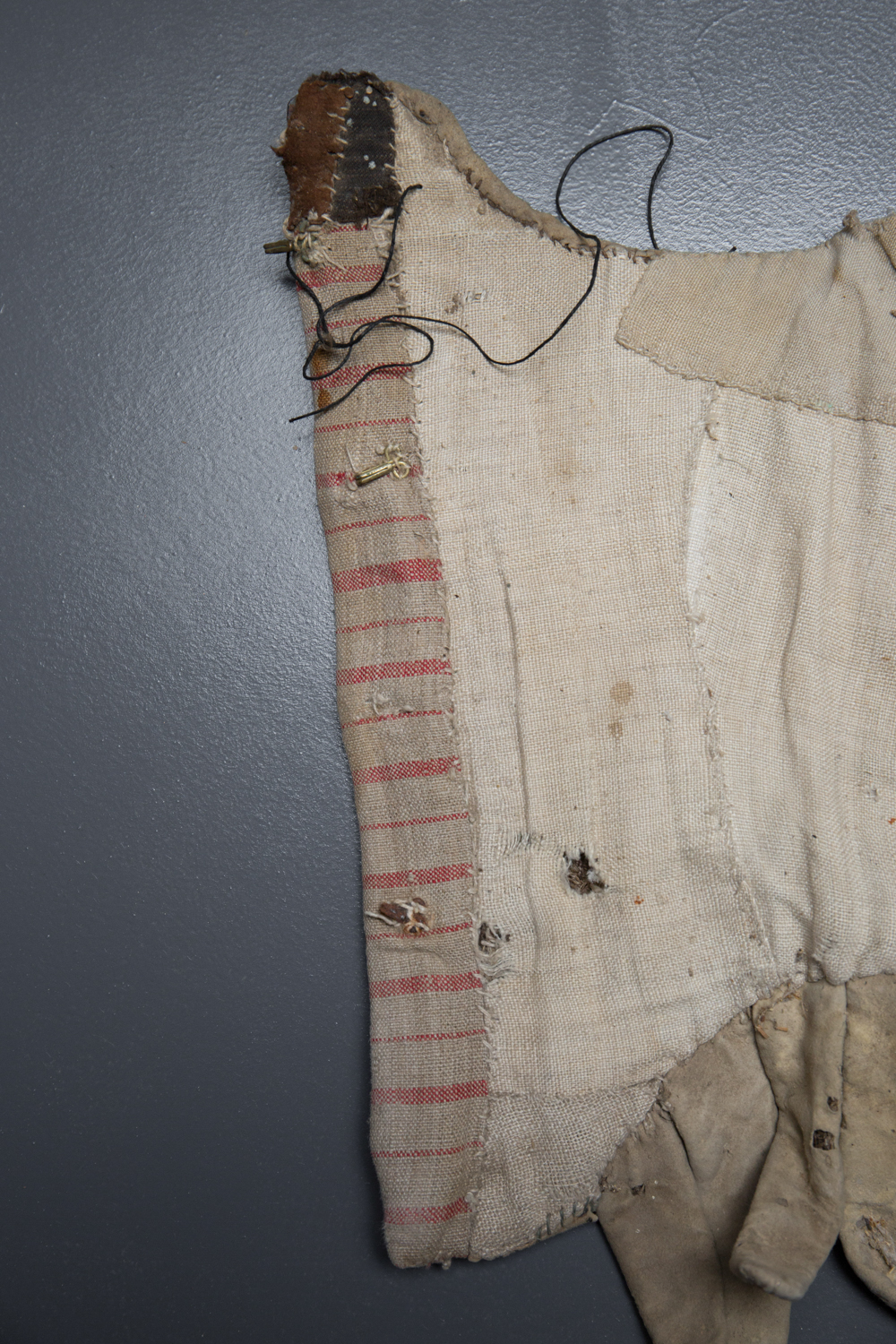Date: c. 1770s
Origin: Tyrol, Austria
Fabric: Silk brocade, linen, leather, baleen
Brand: Custom made
The stays were found hidden in a Tyrolean farm, with little known about their original history. The materials and style suggest that they were made in the 18th century. The garment is well worn with multiple repairs and alterations. It is entirely hand sewn, and was originally made with an exterior of luxurious silk brocade and leather binding.
The lining was originally linen, and both the interior and exterior of the garment have been repeatedly patched and repaired with numerous different fabrics. The garment is structured with many pieces of baleen. It is possible that these stays were later worn as a piece of costume in the 19th century, as there appear to be numerous alterations to the garment with 19th century materials and components. It fastens with lacing through hand sewn eyelets at the centre back, though this lacing was likely replaced at a later date.
The positioning of the surviving shoulder strap suggests that these stays would have originally been worn with a separate stomacher panel. A stomacher was a triangular shaped panel, occasionally boned for structure, that the stays would either pin to or fasten over with lacing. The stomacher would be positioned over the bust and stomach, and would have provided additional support and coverage.
In May 2025, these stays were mounted on a mannequin by Jamie Ostmann to better represent how this garment would have been originally worn. It is shown with a reproduction stomacher created by Royal Black Couture & Corsetry and silk ribbon lacing.
Medical grade X-rays of this garment can be viewed here.
A pattern for this garment can be purchased here.
Kindly donated to The Underpinnings Museum collection by Liz Denocte.
